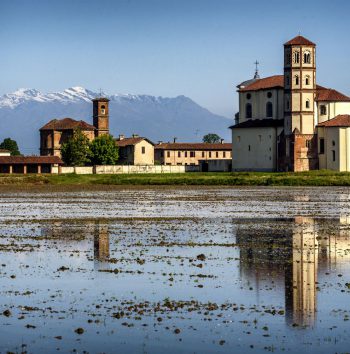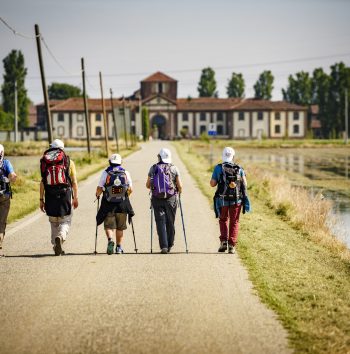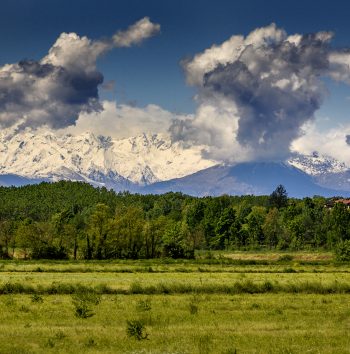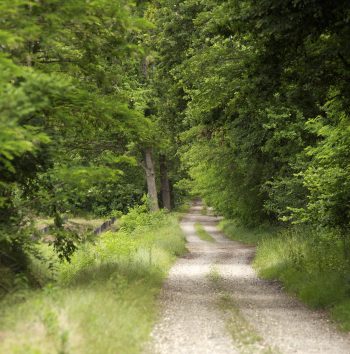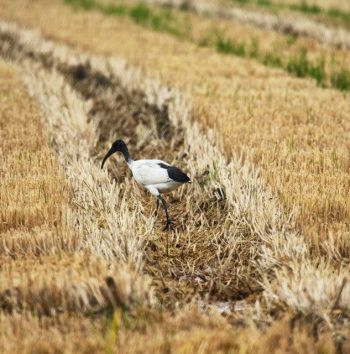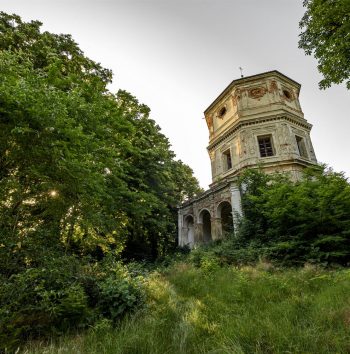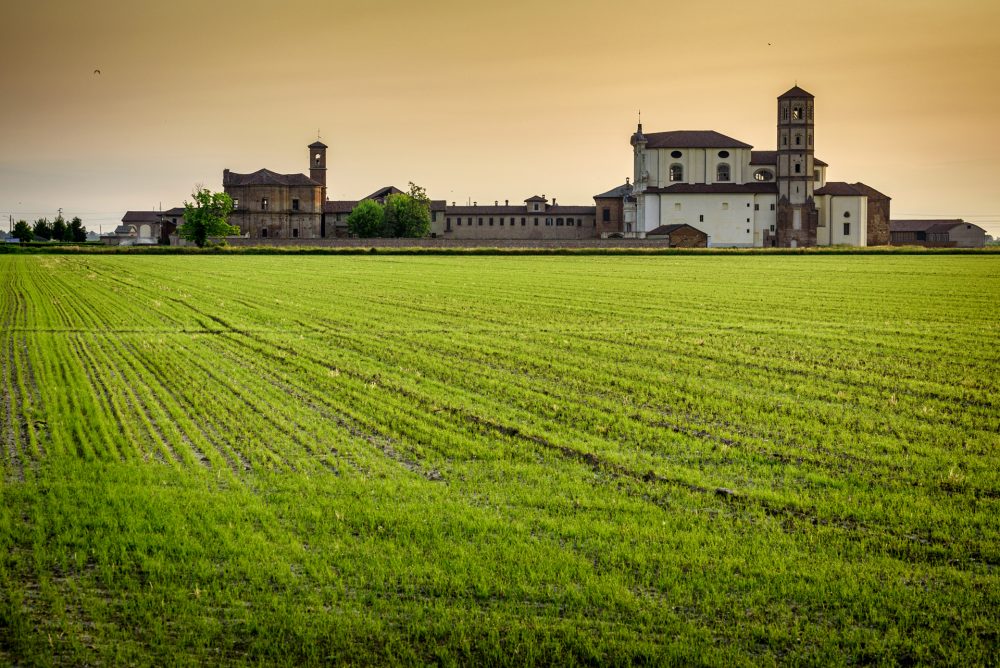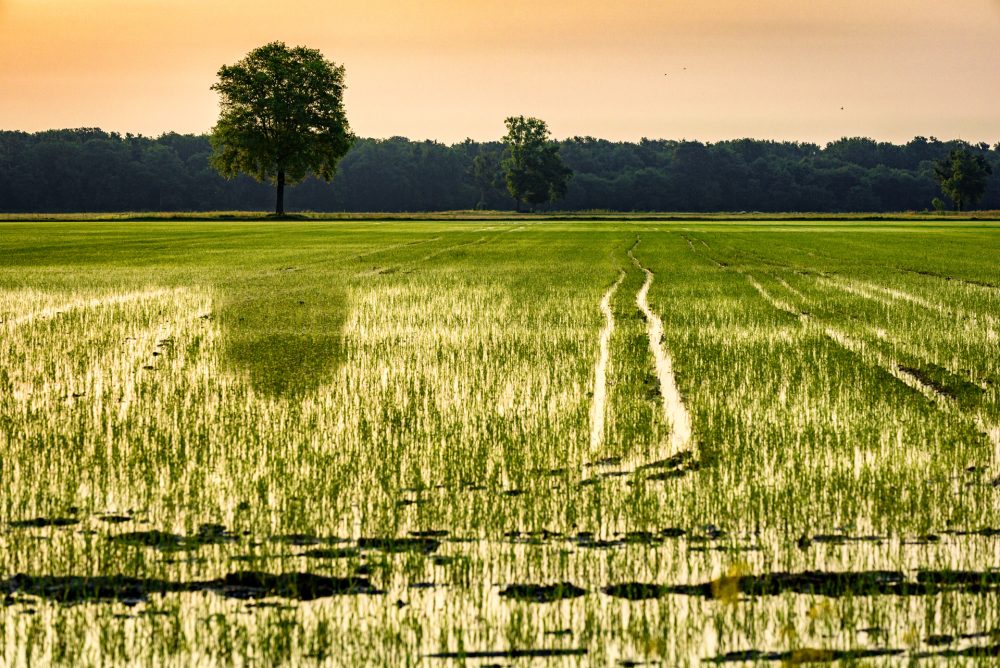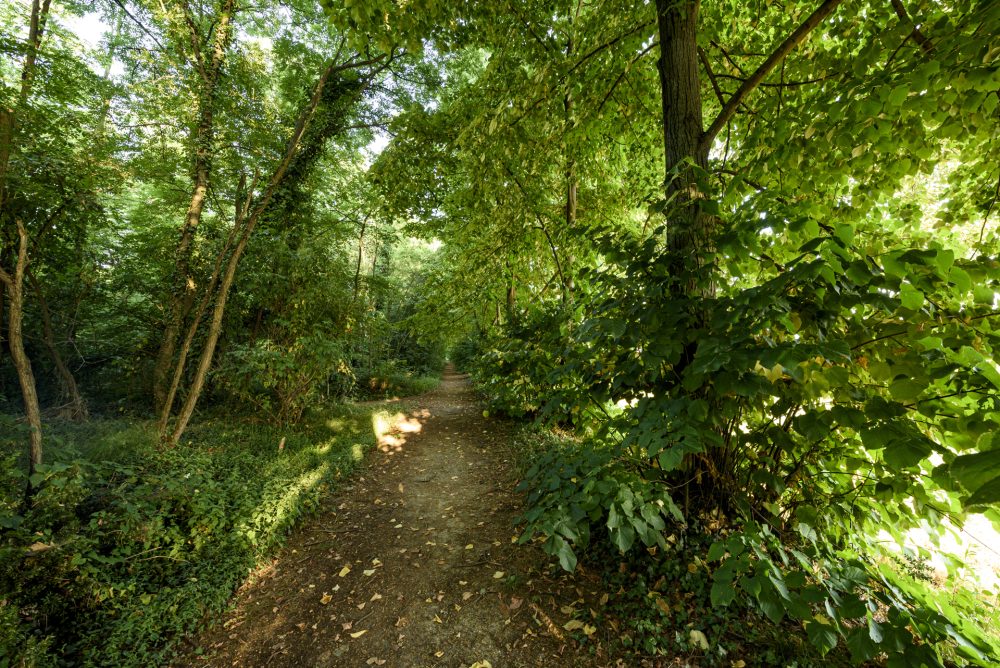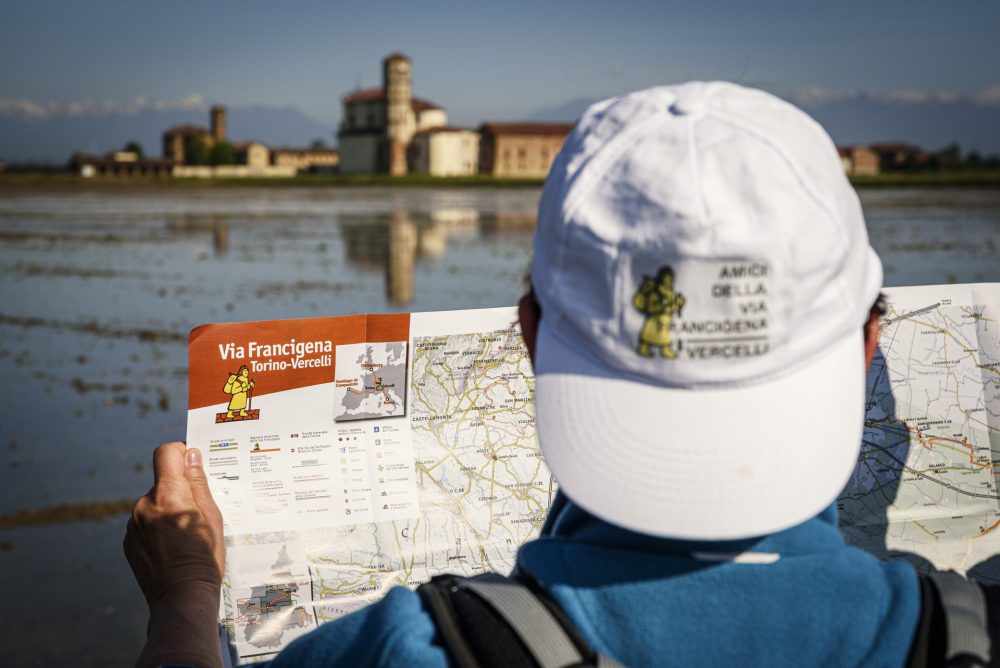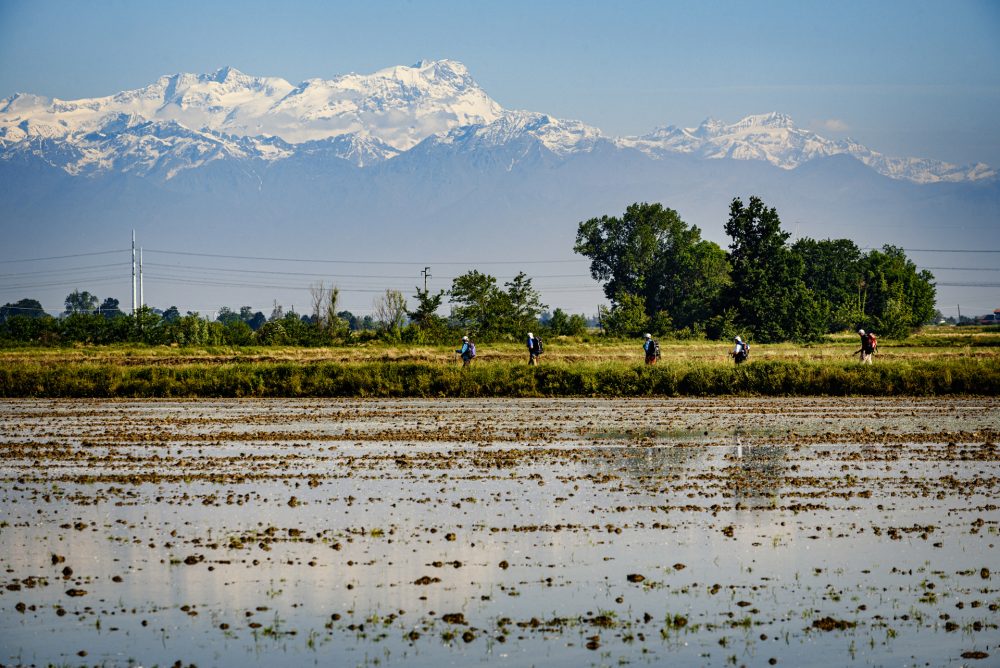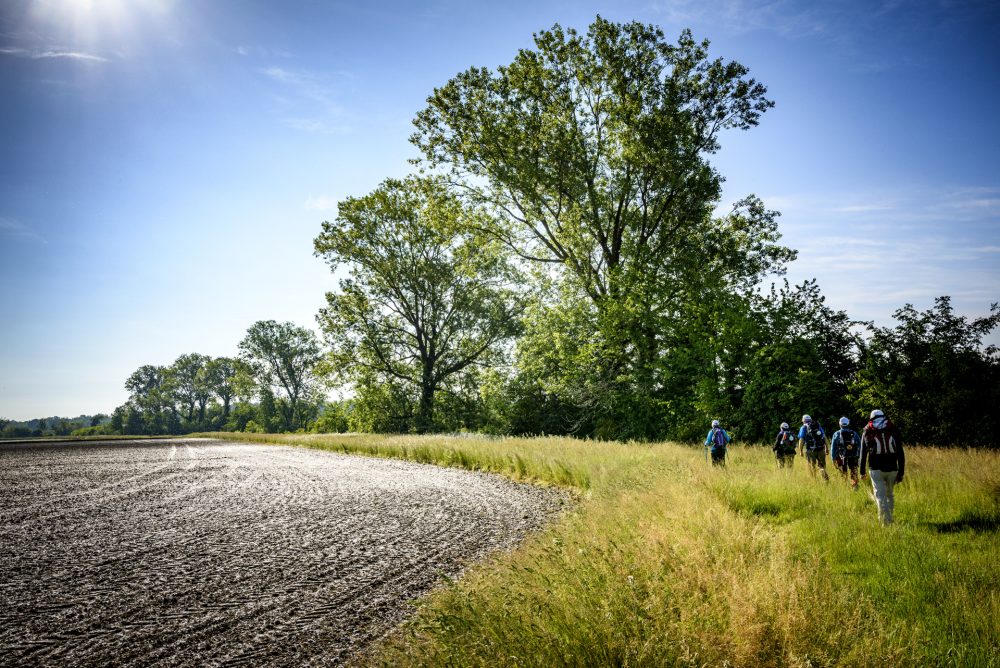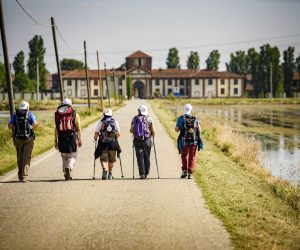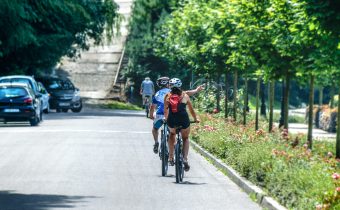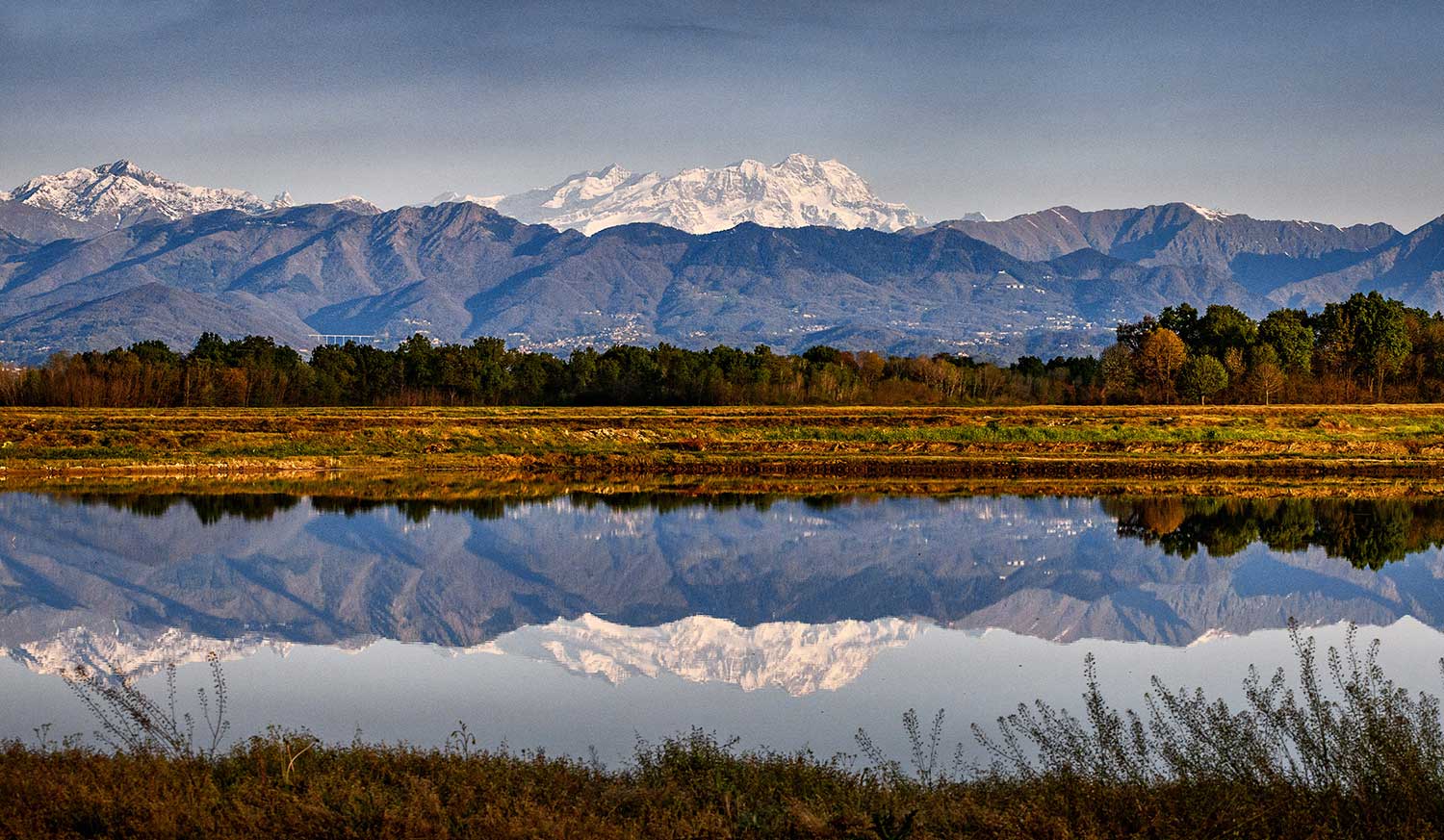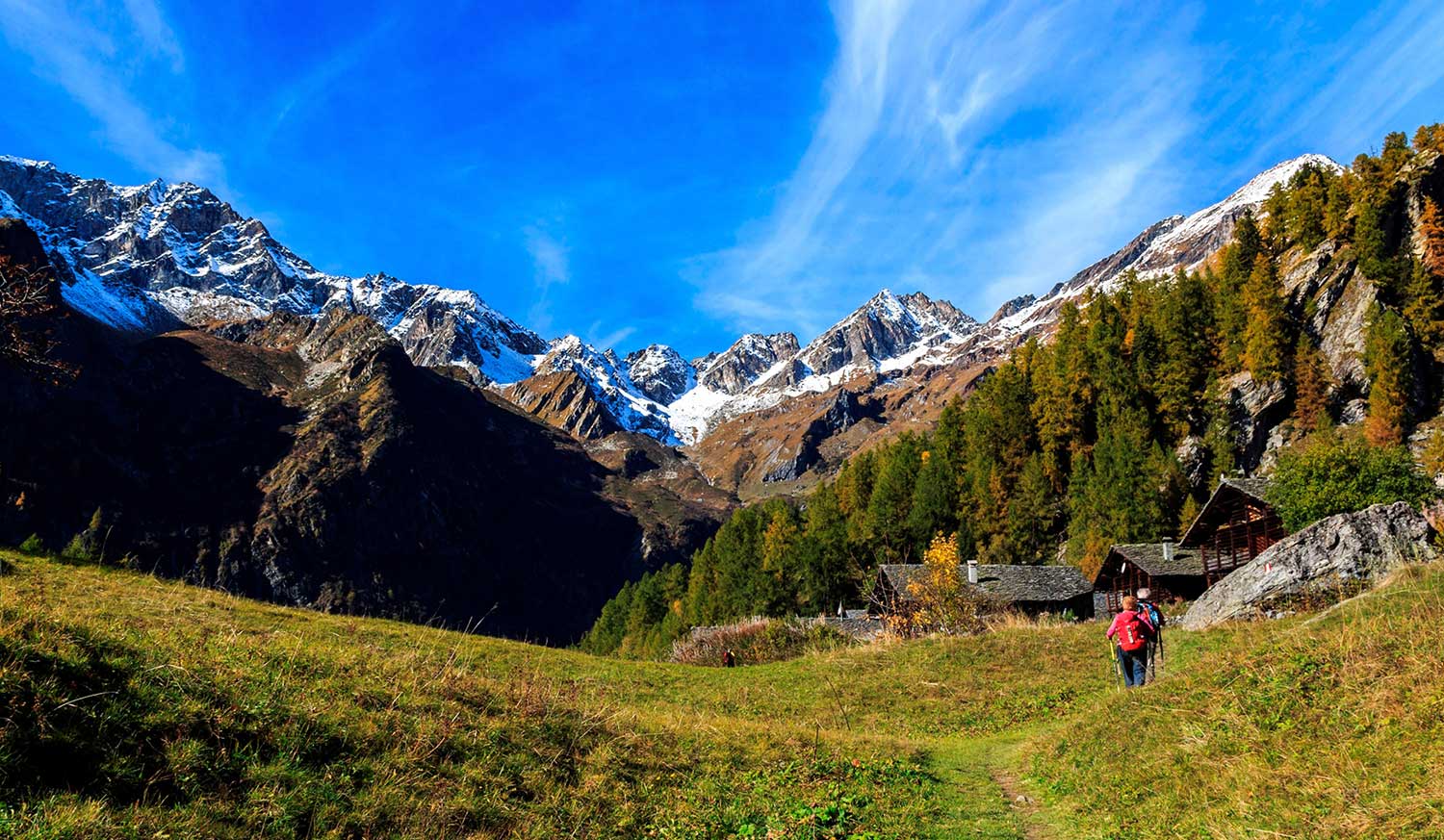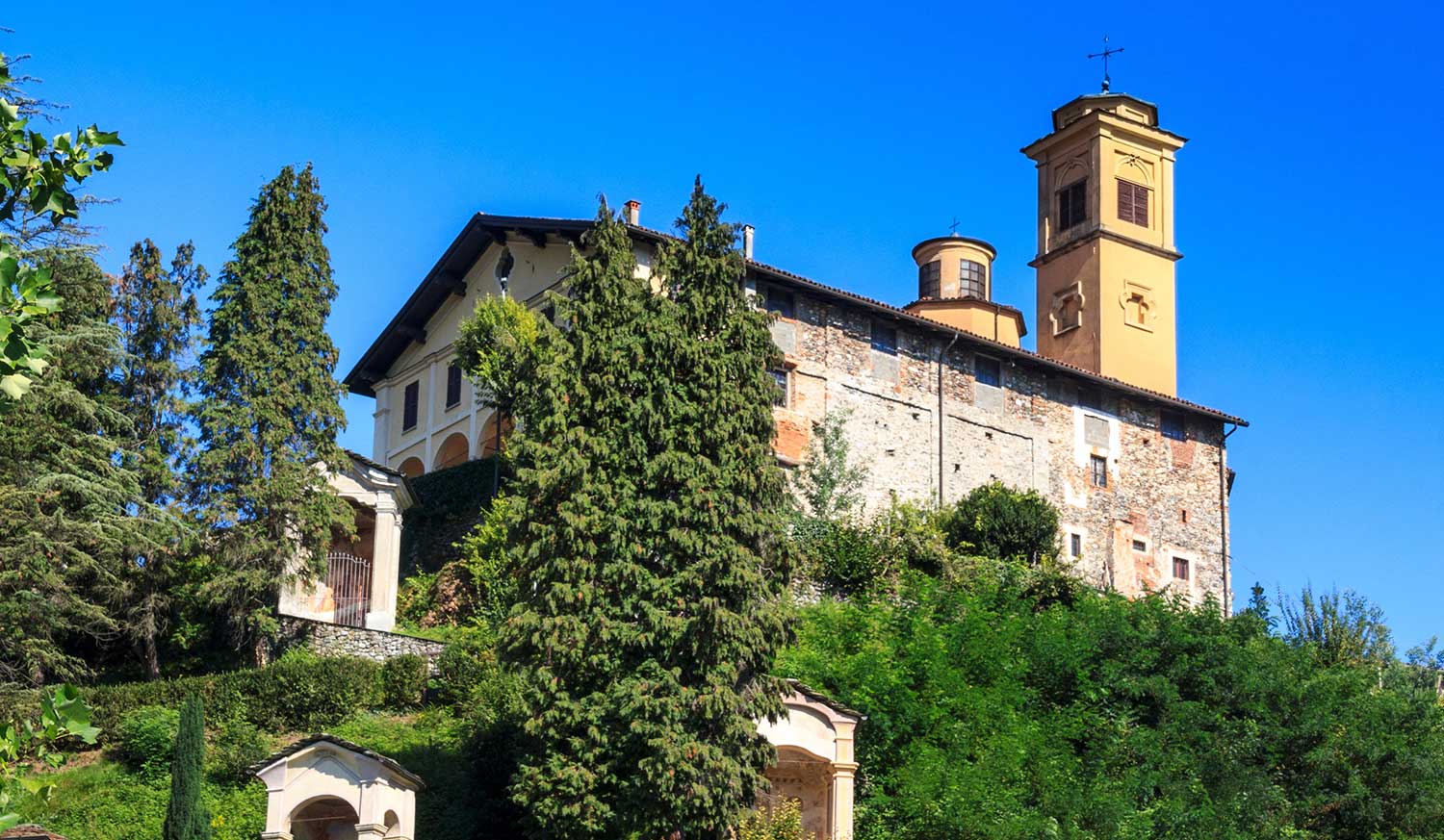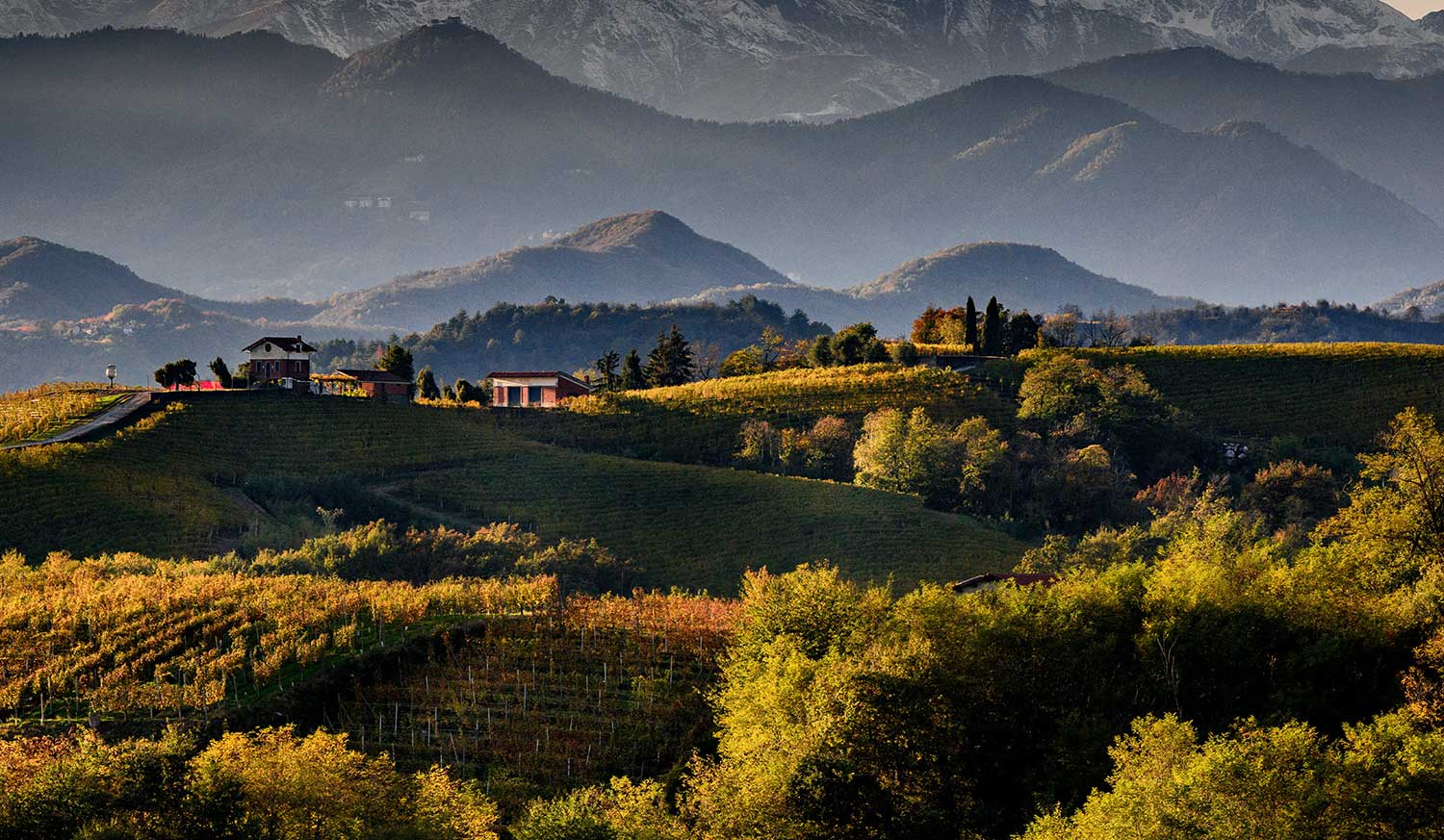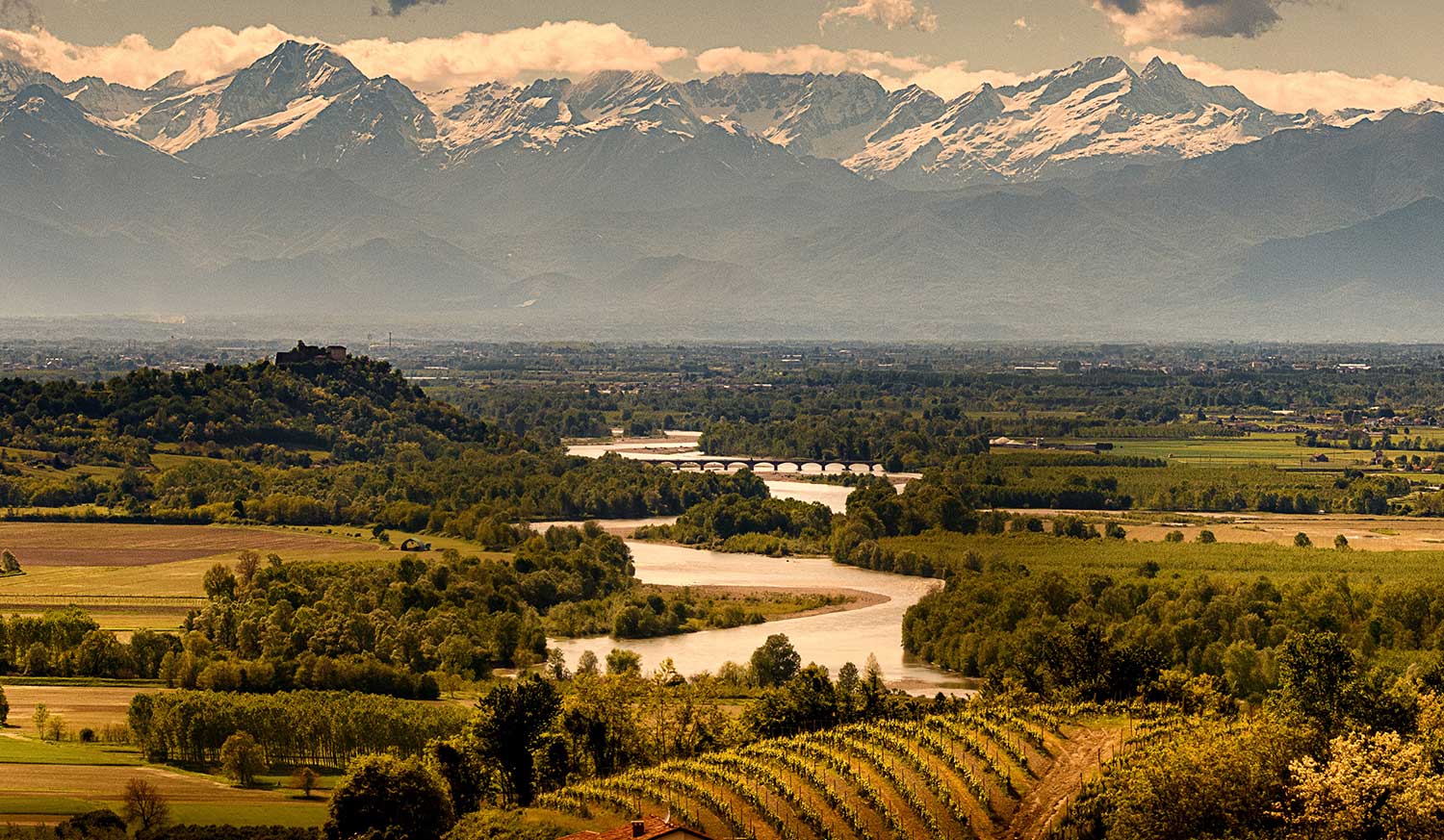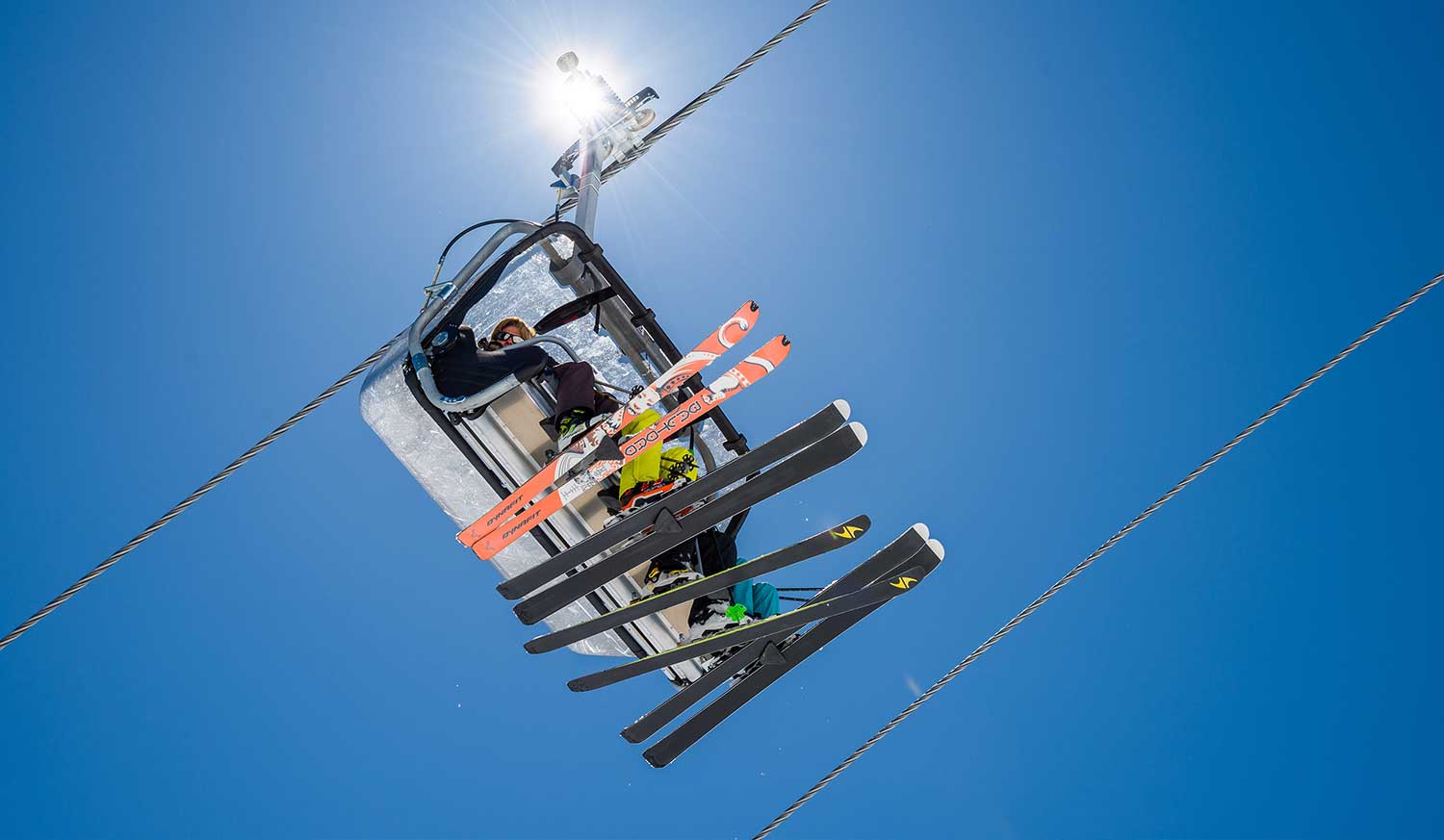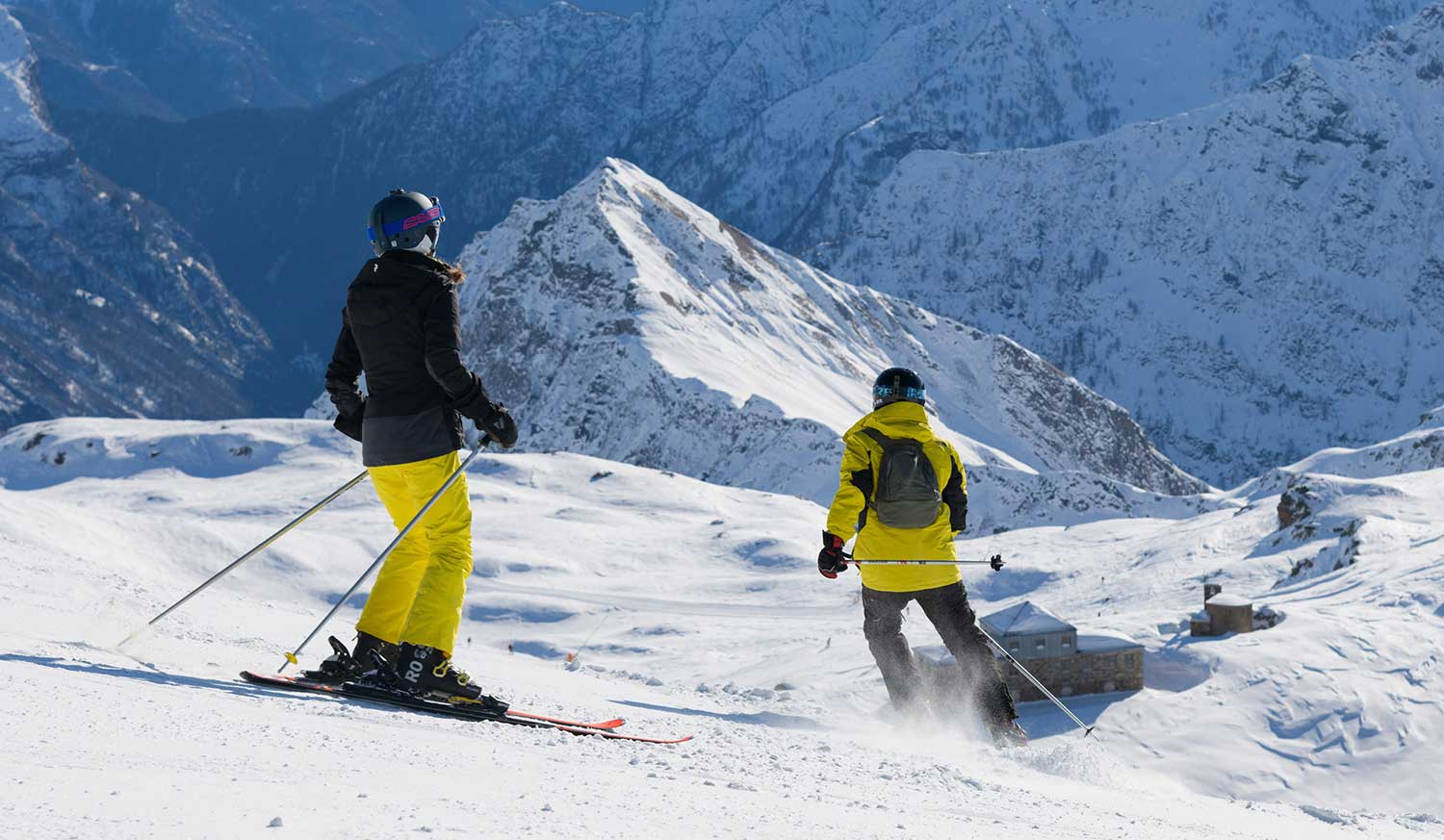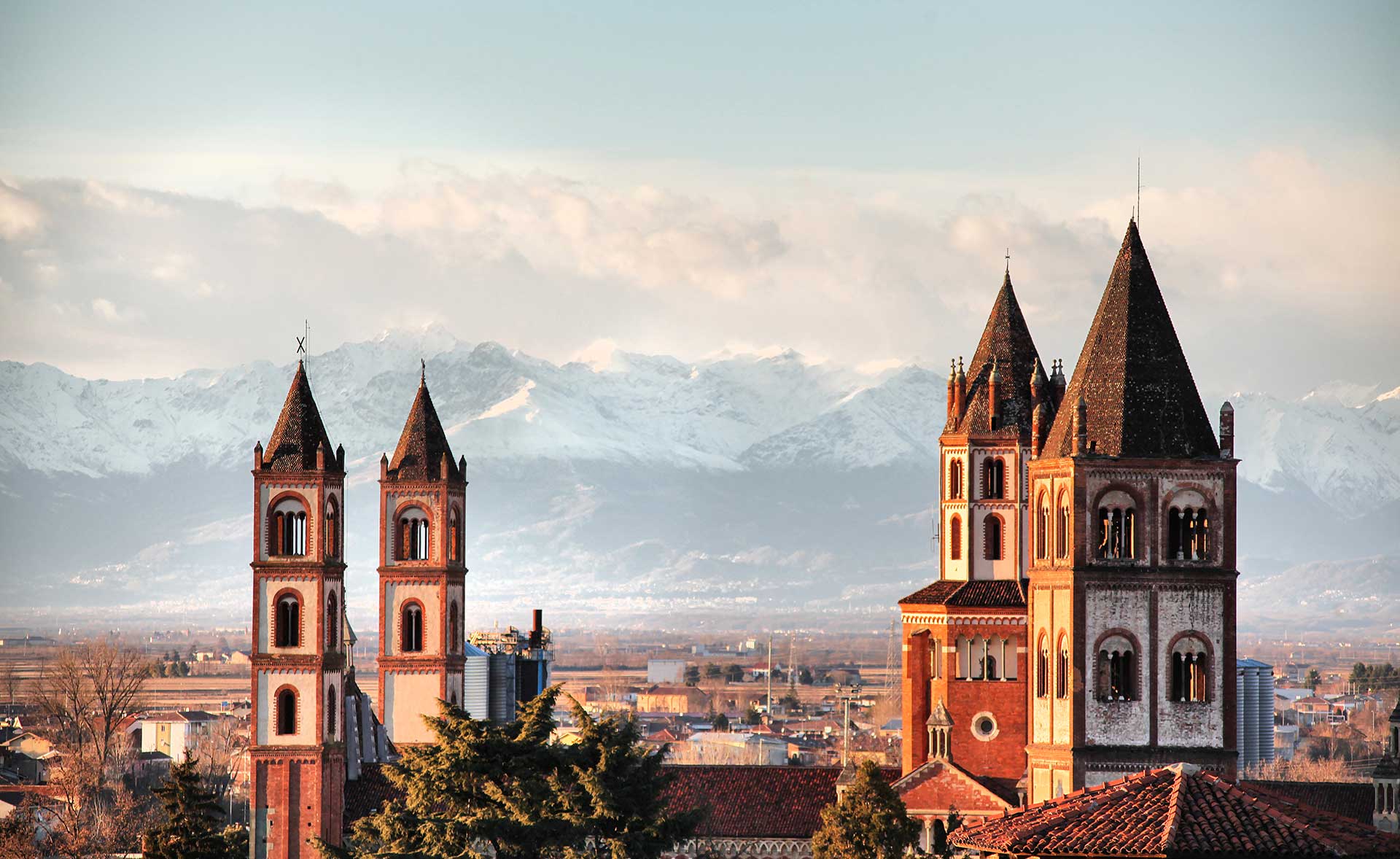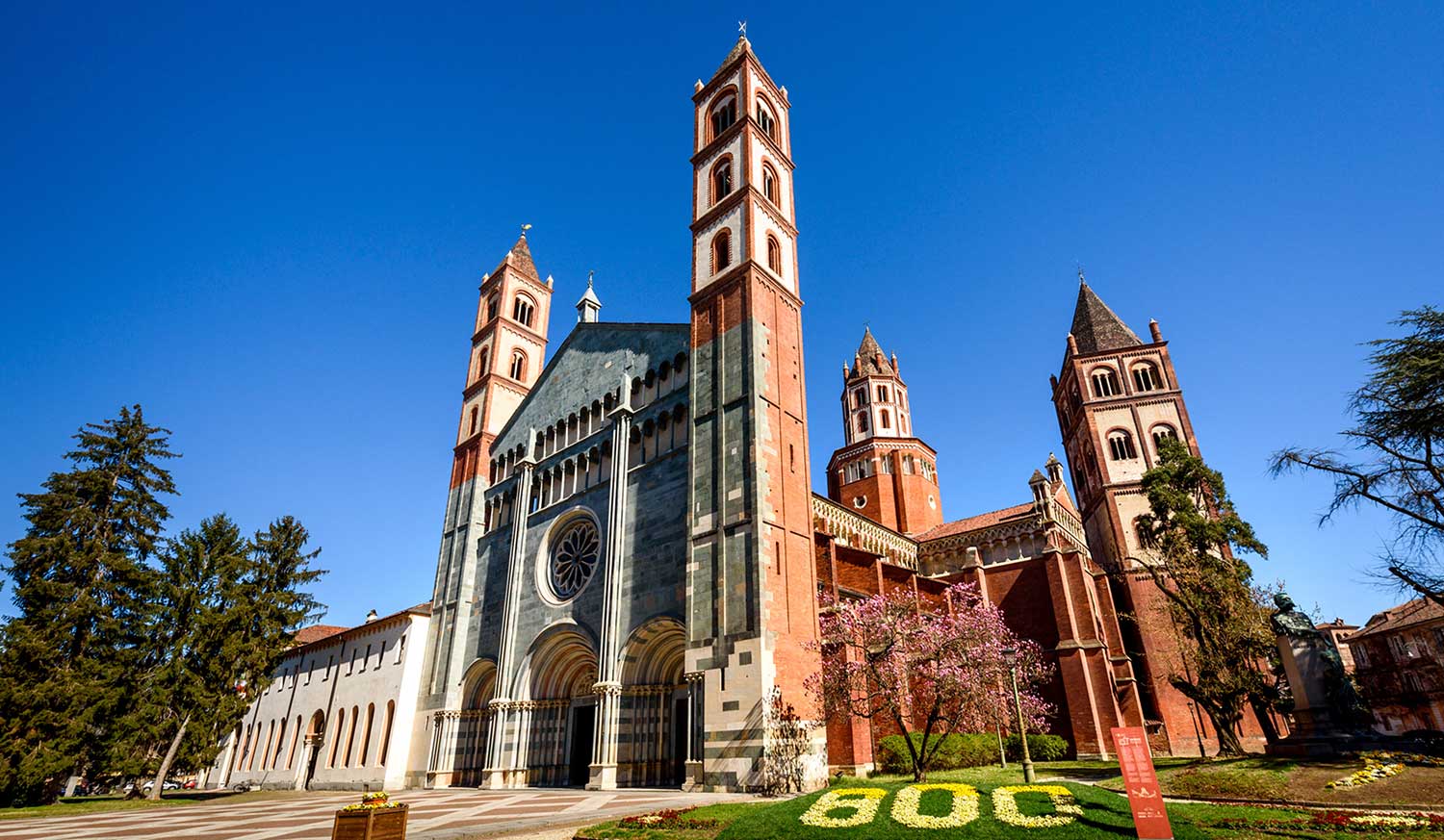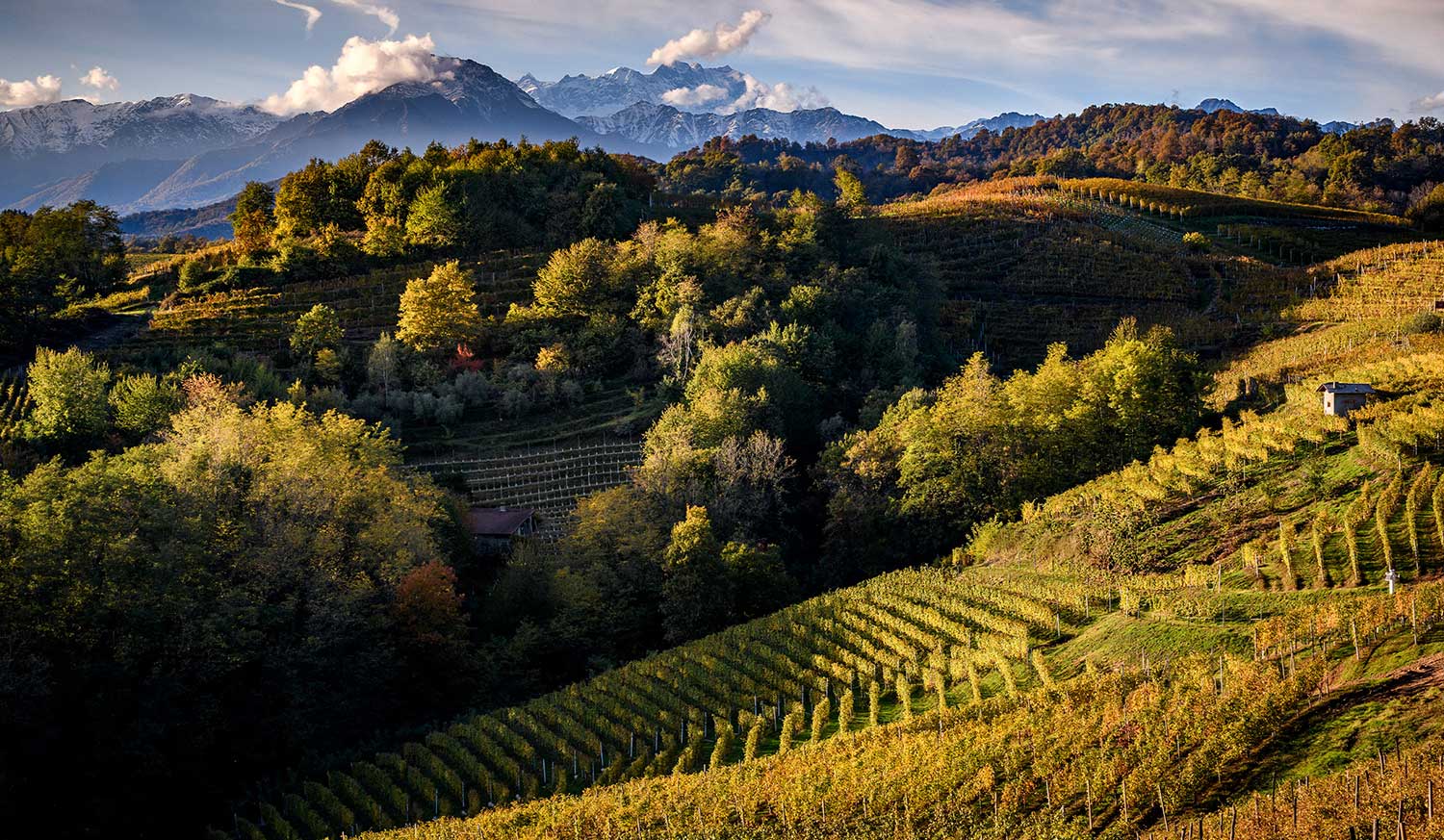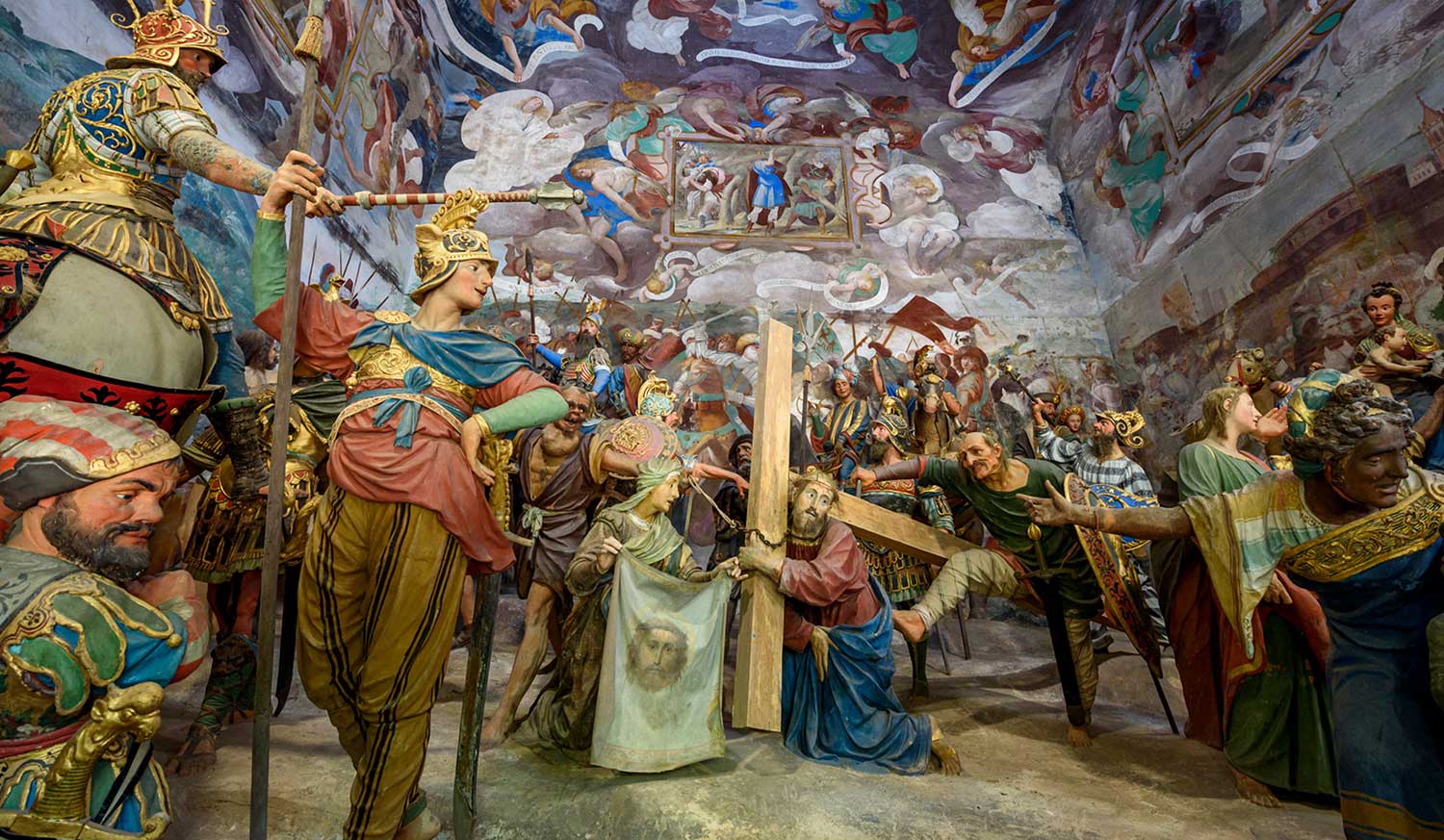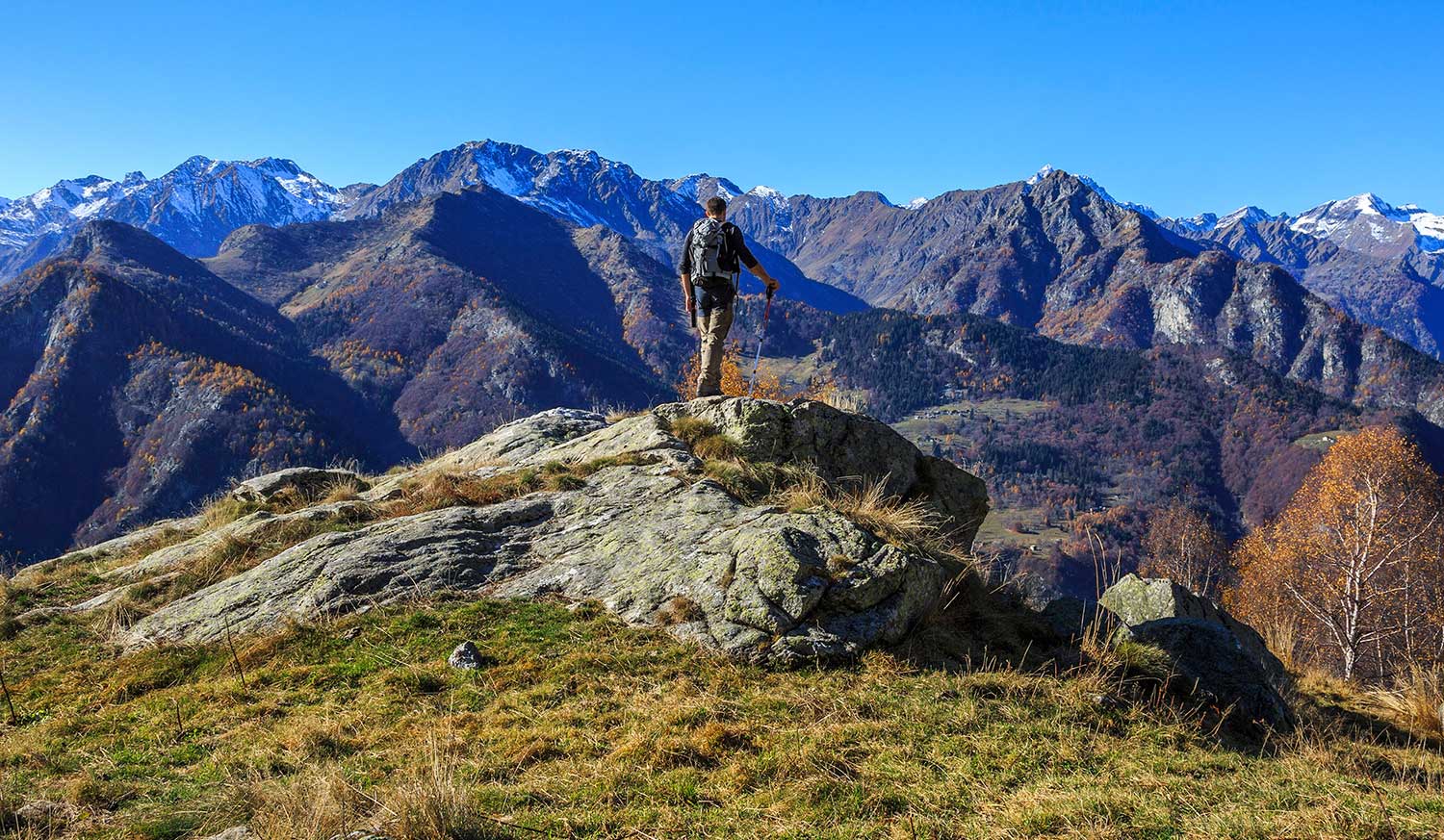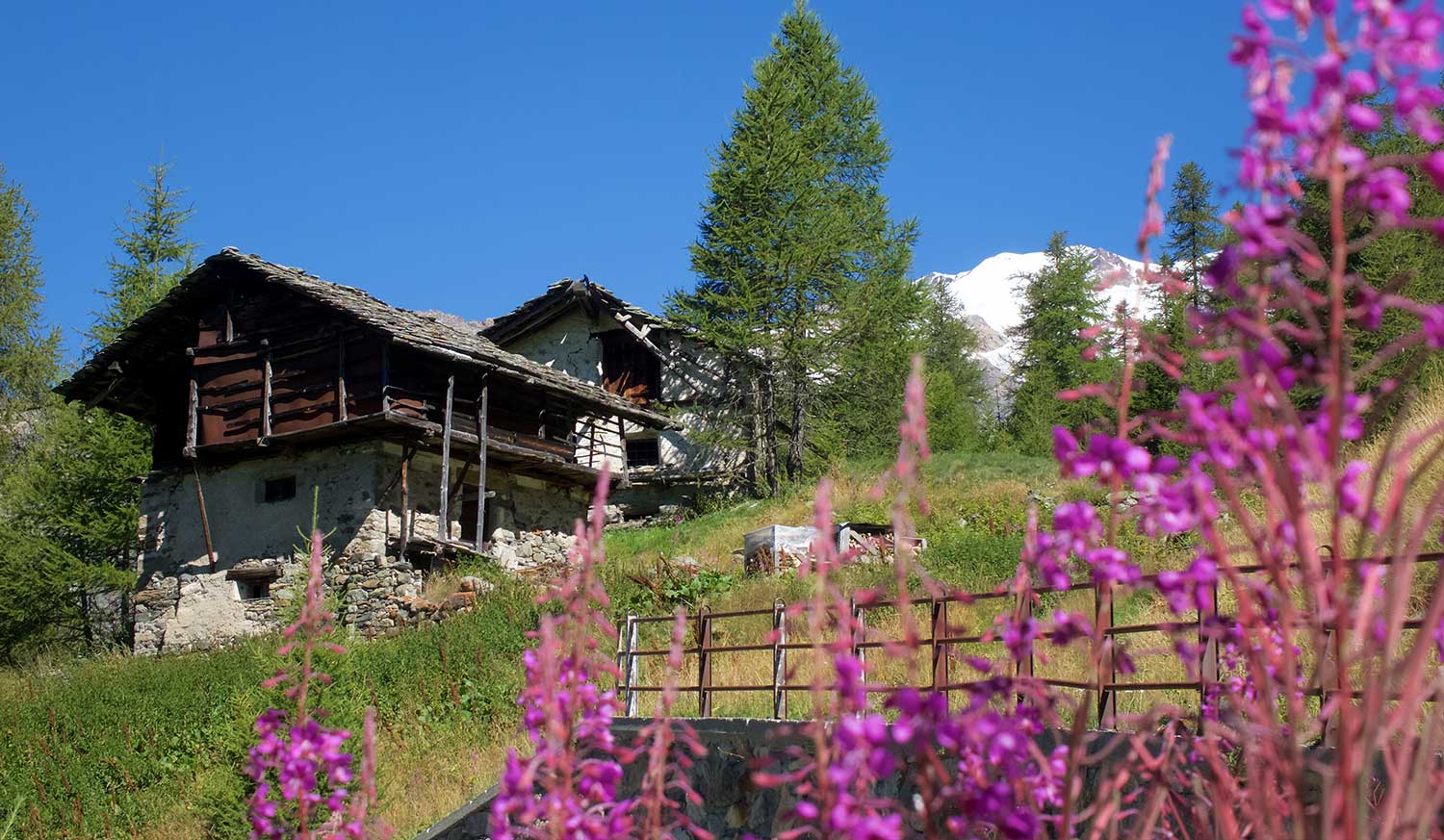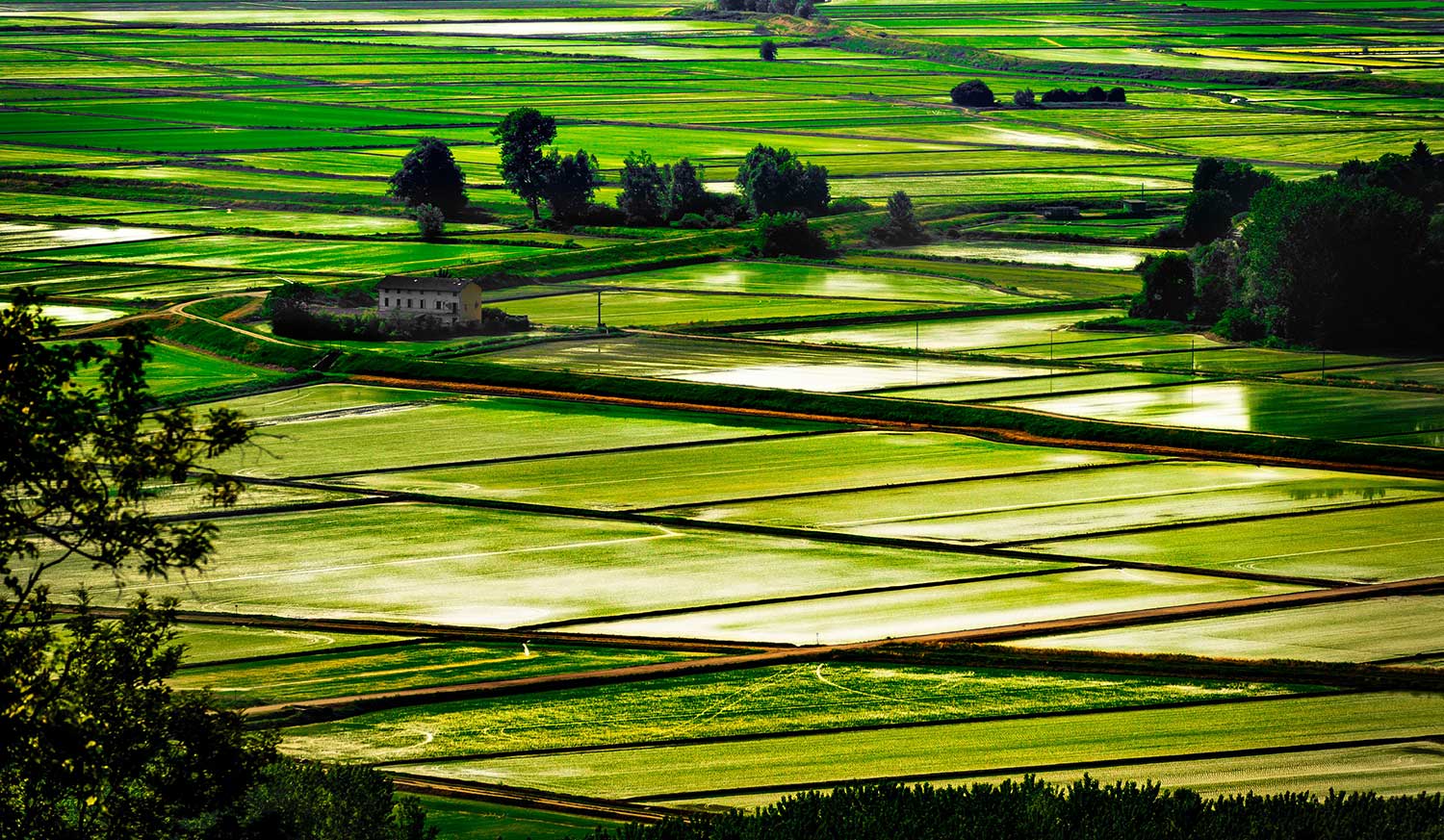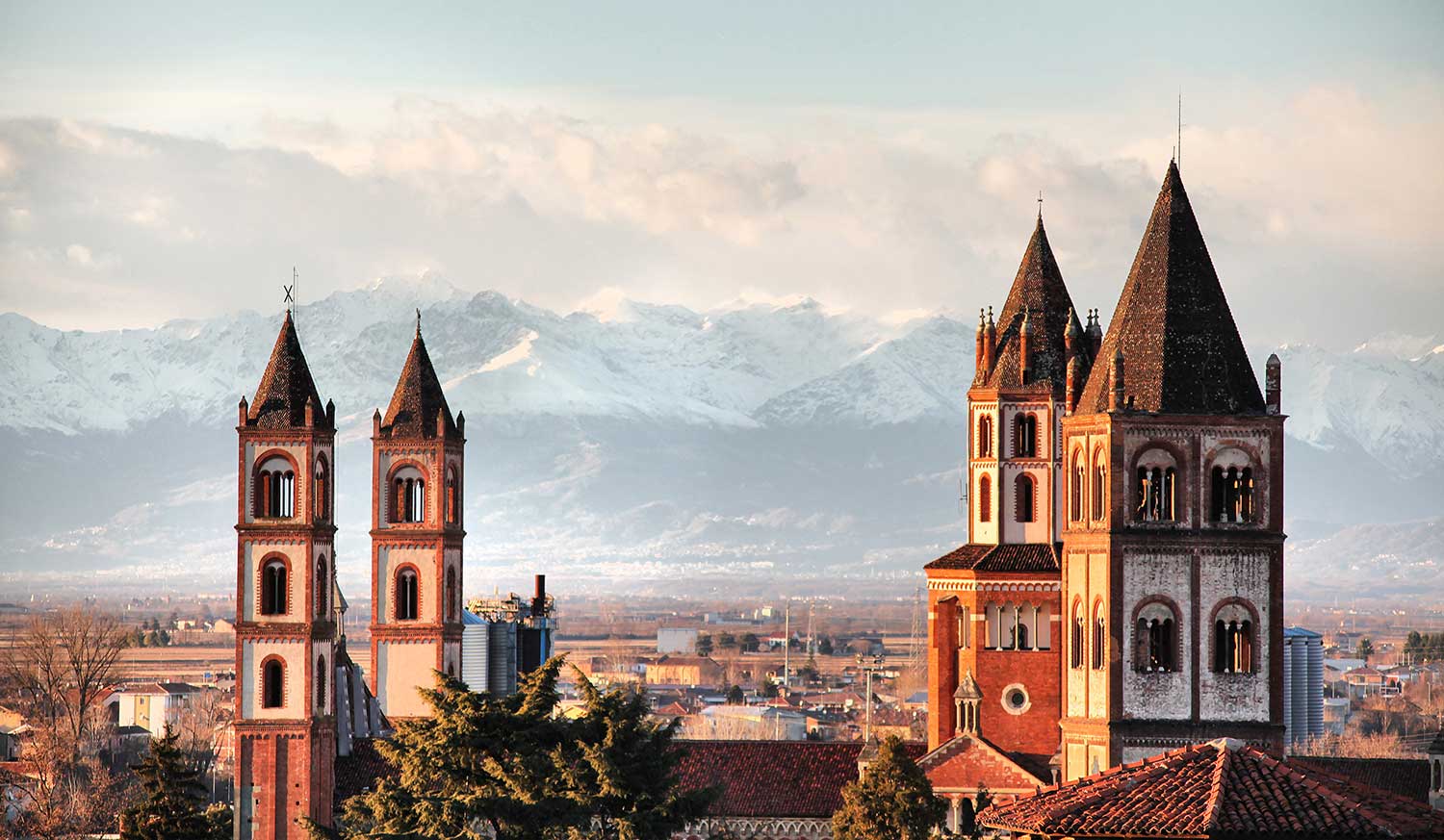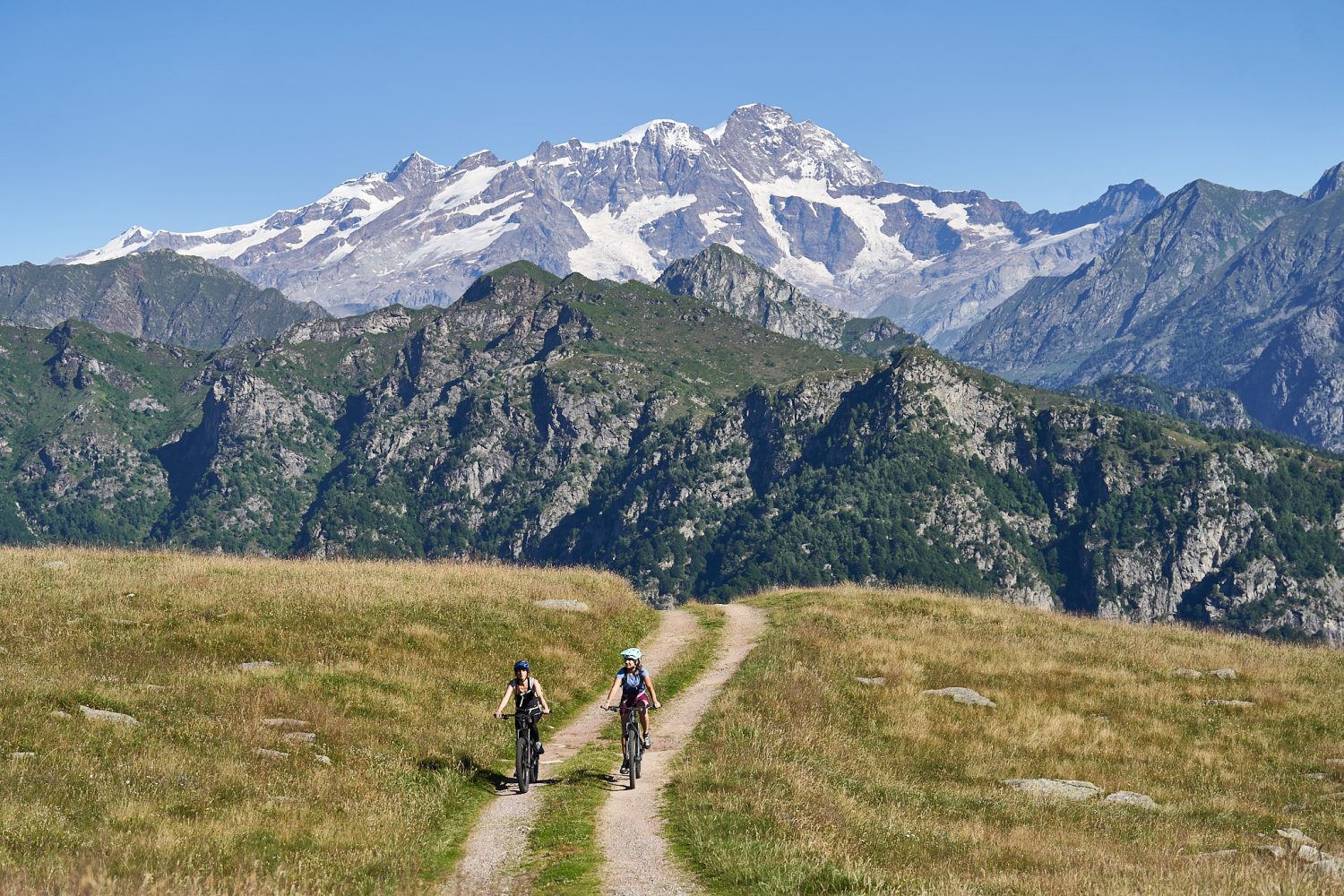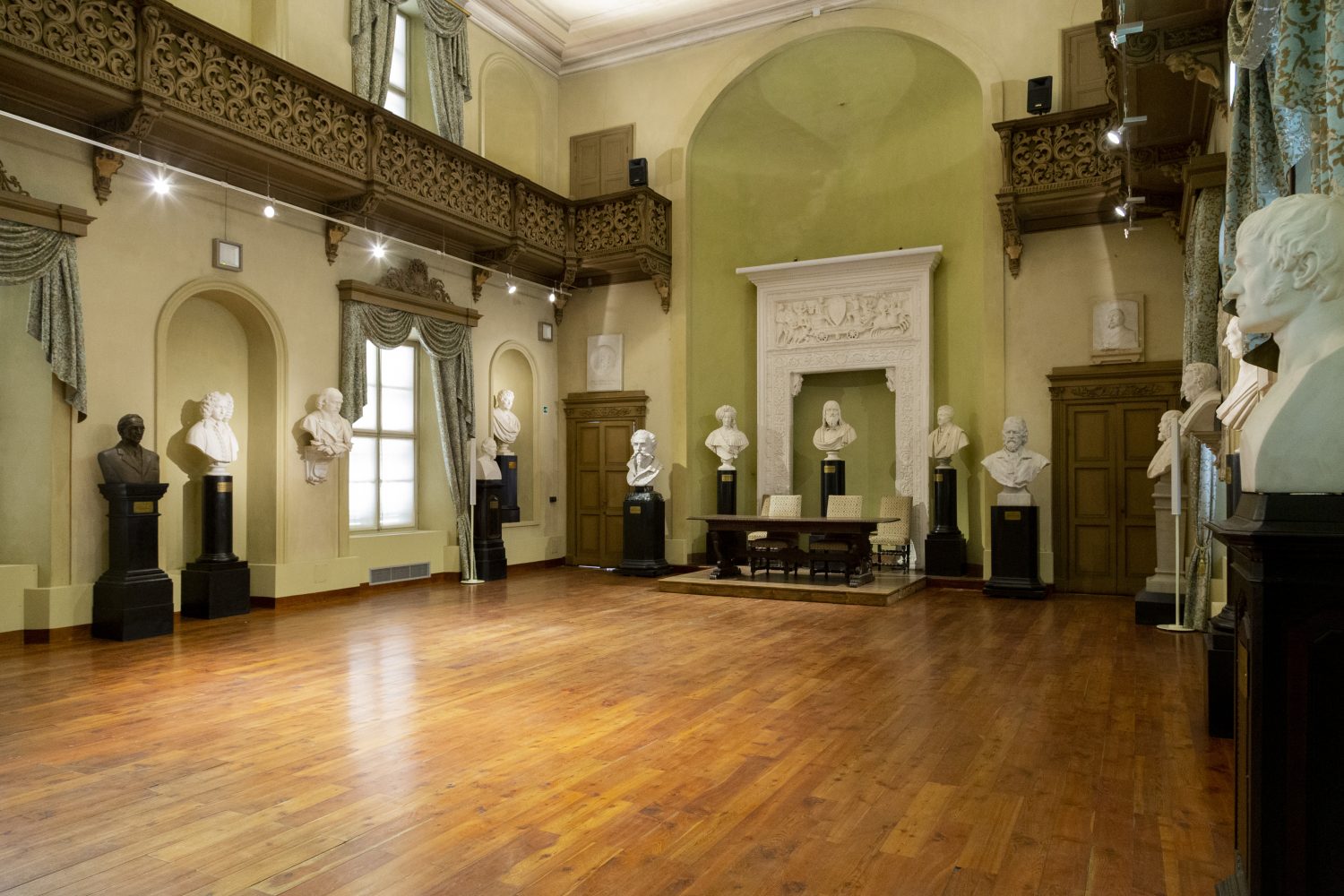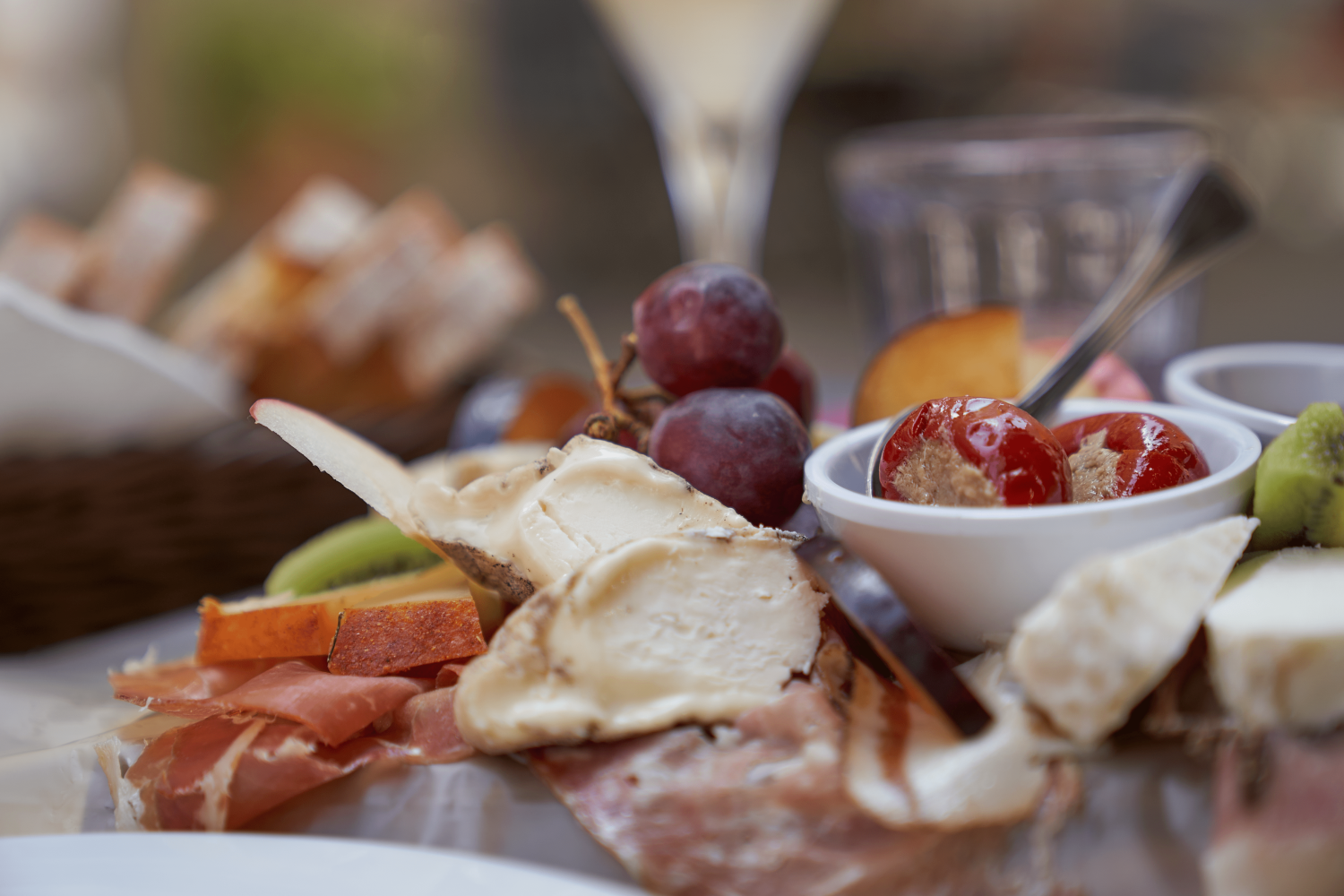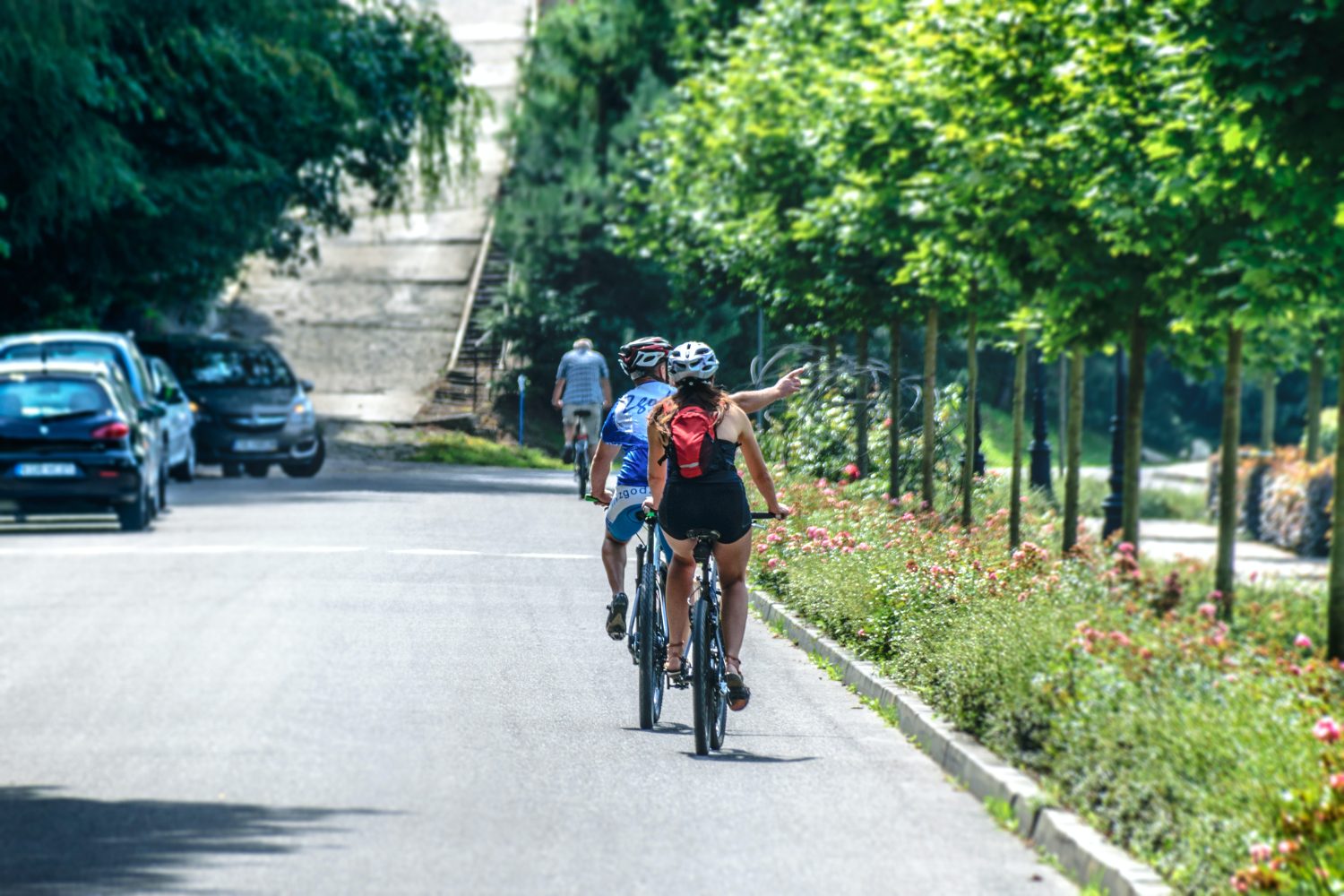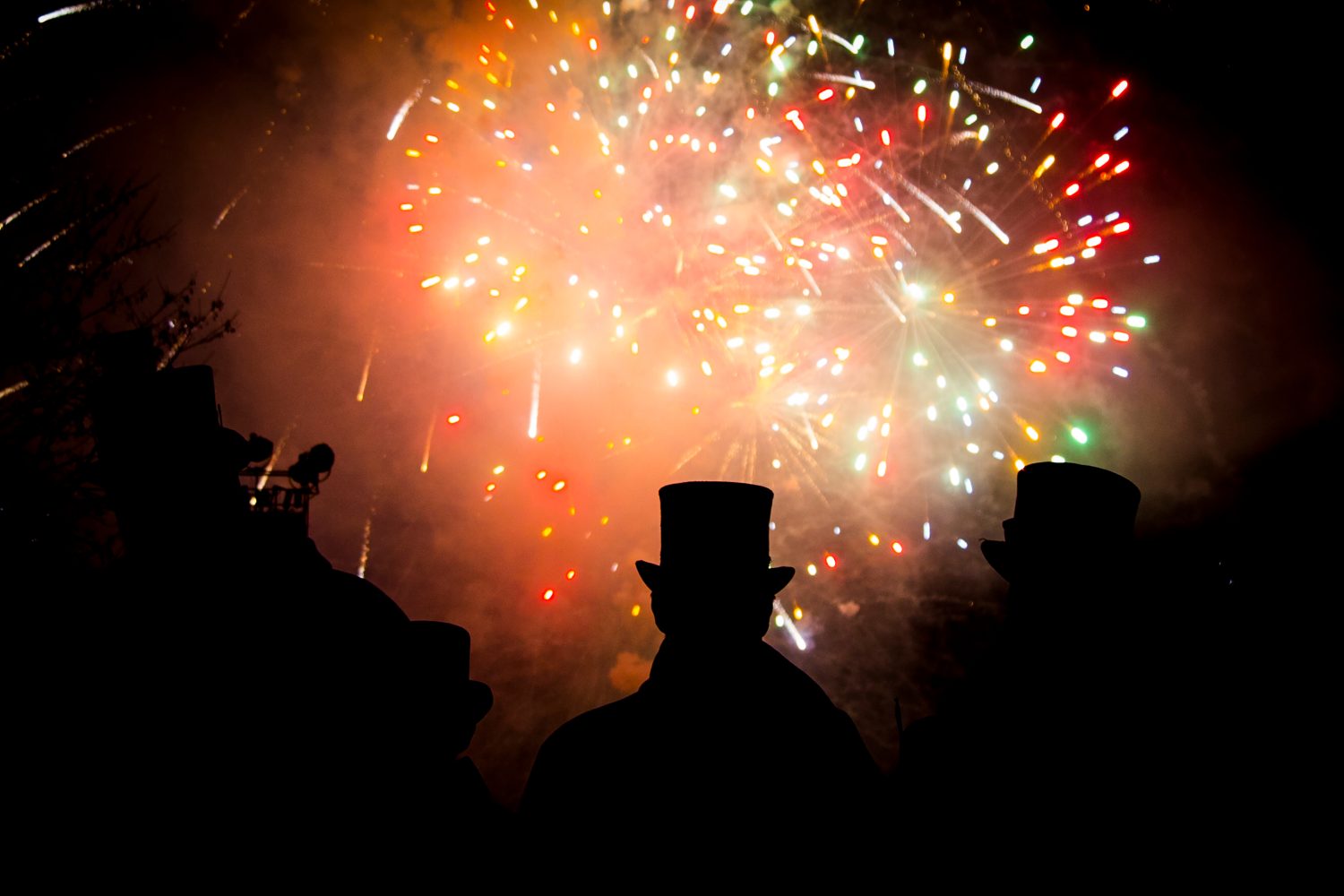Meaning of “Grange”
#losapevateche
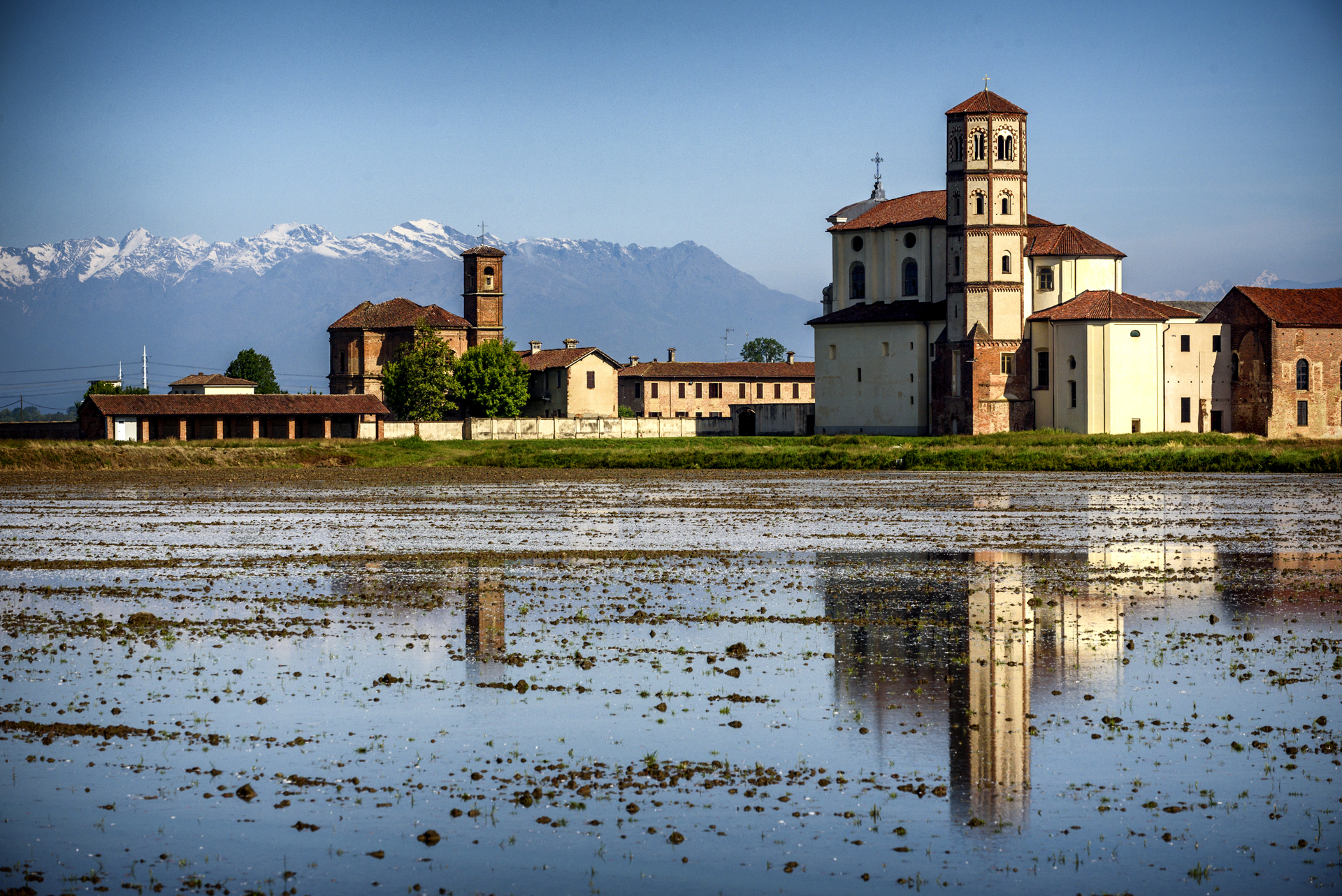
Exploring the Grange
Medieval corners among
the rice fields
The history of Vercelli’s agriculture and the transformation of the territory from lowland forest to rice-growing land can be found in a small strip of plain, located among Vercelli, Crescentino, and Trino, known as the Triangle of the Grange. Through this itinerary, you may visit the locations that first saw the birth of the cultivation of rice, the Grange, which represents a living example of an environment full of history and art.
1 lucedio abbey
Known as Principato di Lucedio since 1875, the ancient abbey, was founded in 1123 by the Cistercians at the behest of the Marquis of Monferrato, who granted them the rights over various lands. Now the Abbey is a modern farm that can be toured, and that was able to preserve its characteristic medieval environment. After having crossed the fortified walls, it is still possible to admire the Abbey church, the peculiar bell tower, octagonal at the top but square at the base, and the beautiful chapter house.

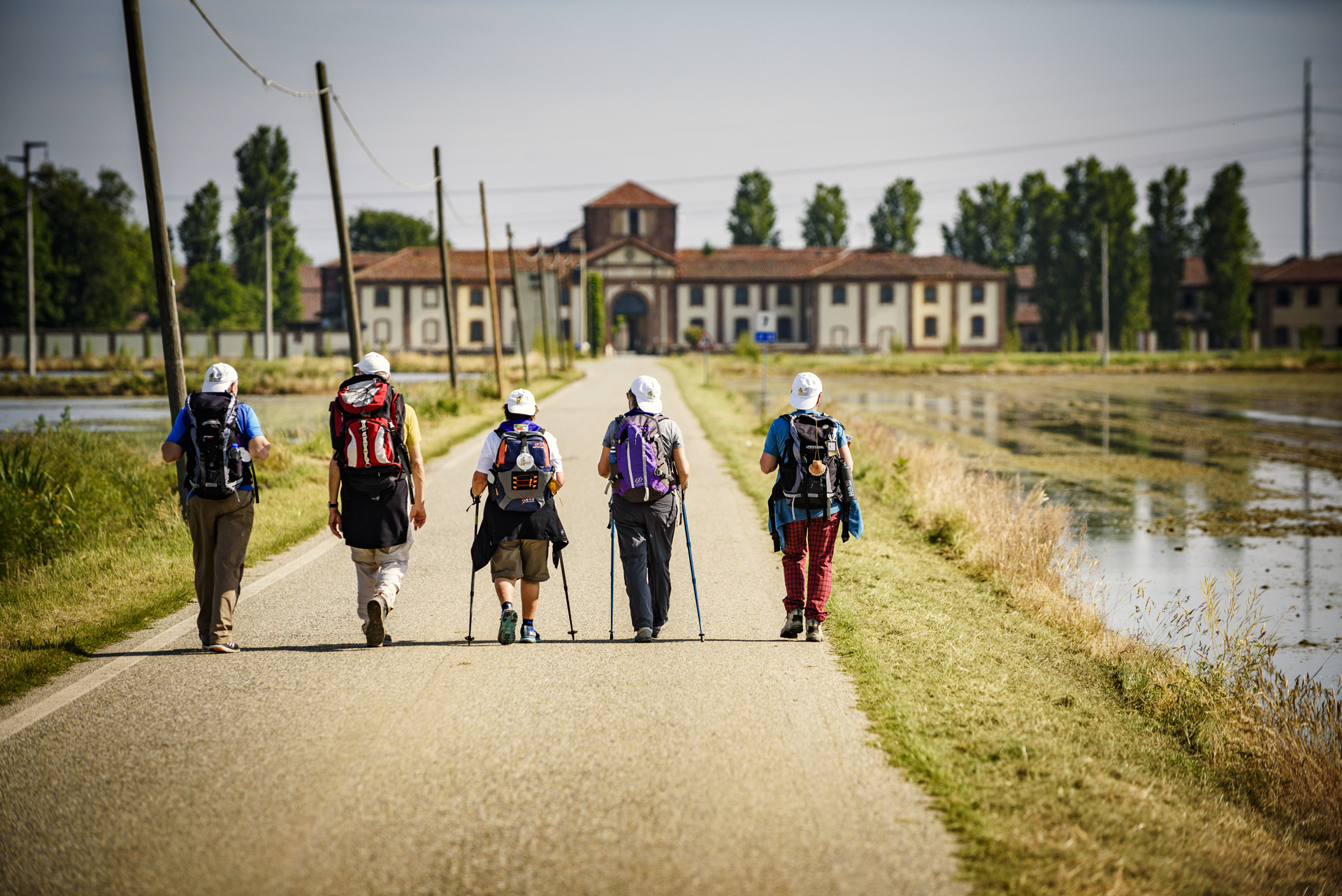
2 cascina darola
Located due north of Lucedio, this farmhouse boasts ancient origins. Donated in 933 by the kings of Italy Ugo and Lotario to the marquises of Monferrato, the latter sold it to Lucedio in 1123: it thus became one of the six granges owned by the abbey. From a structural point of view, it represents an excellent example of a farmstead with a closed courtyard.
3 Montarolo, Ramezzana, Castelmerlino, Leri e Montarucco
In the past property of Lucedio, the others Grange are located near the rural complex. While Montarucco, Ramezzana and Montarolo are located due south of Lucedio, Leri and Castelmerlino are located in the area that extends to the northwest of the “principato” and correspond to the possessions of the Benso di Cavour family, to whom the minister Camillo Benso Conte di Cavour belonged.
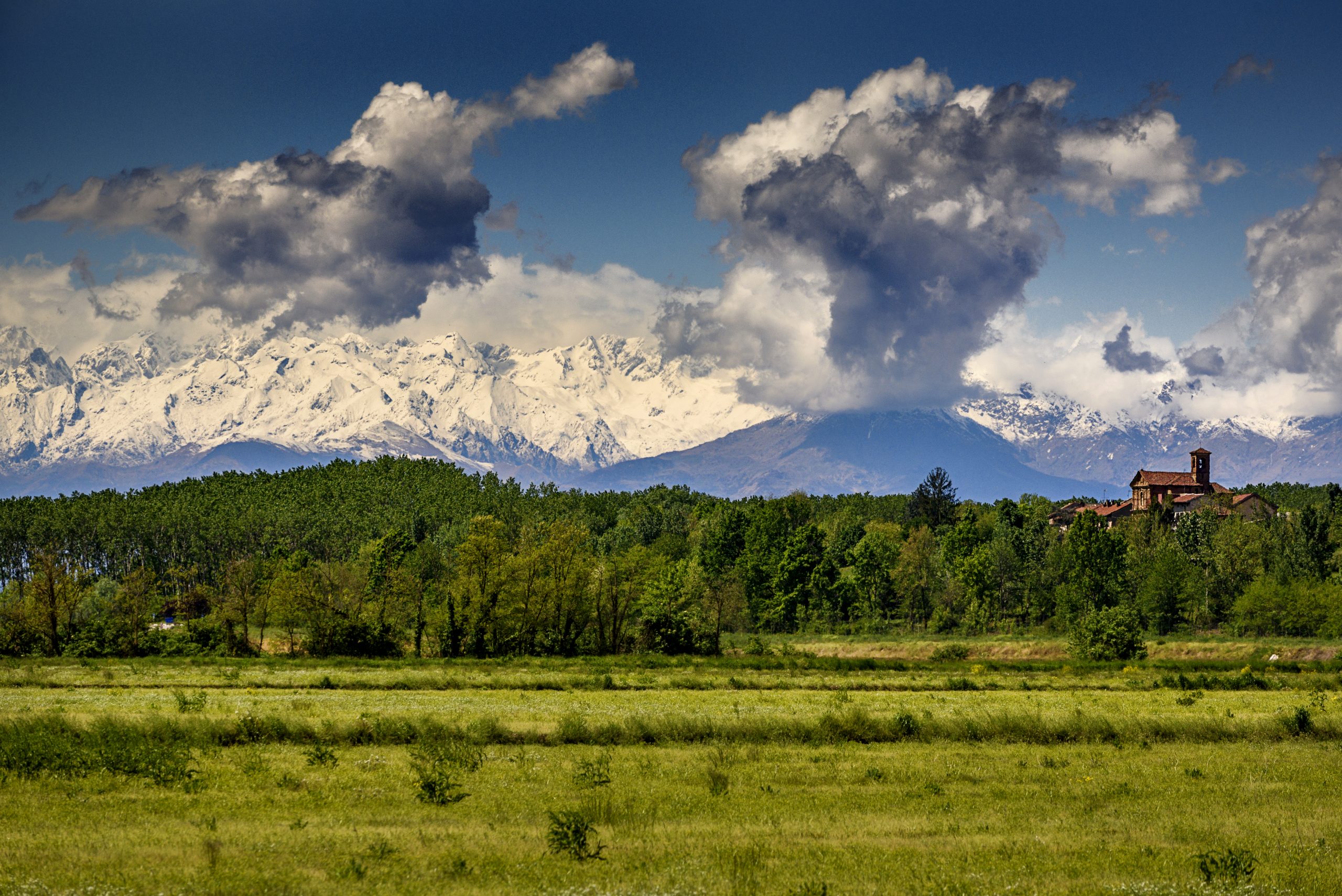
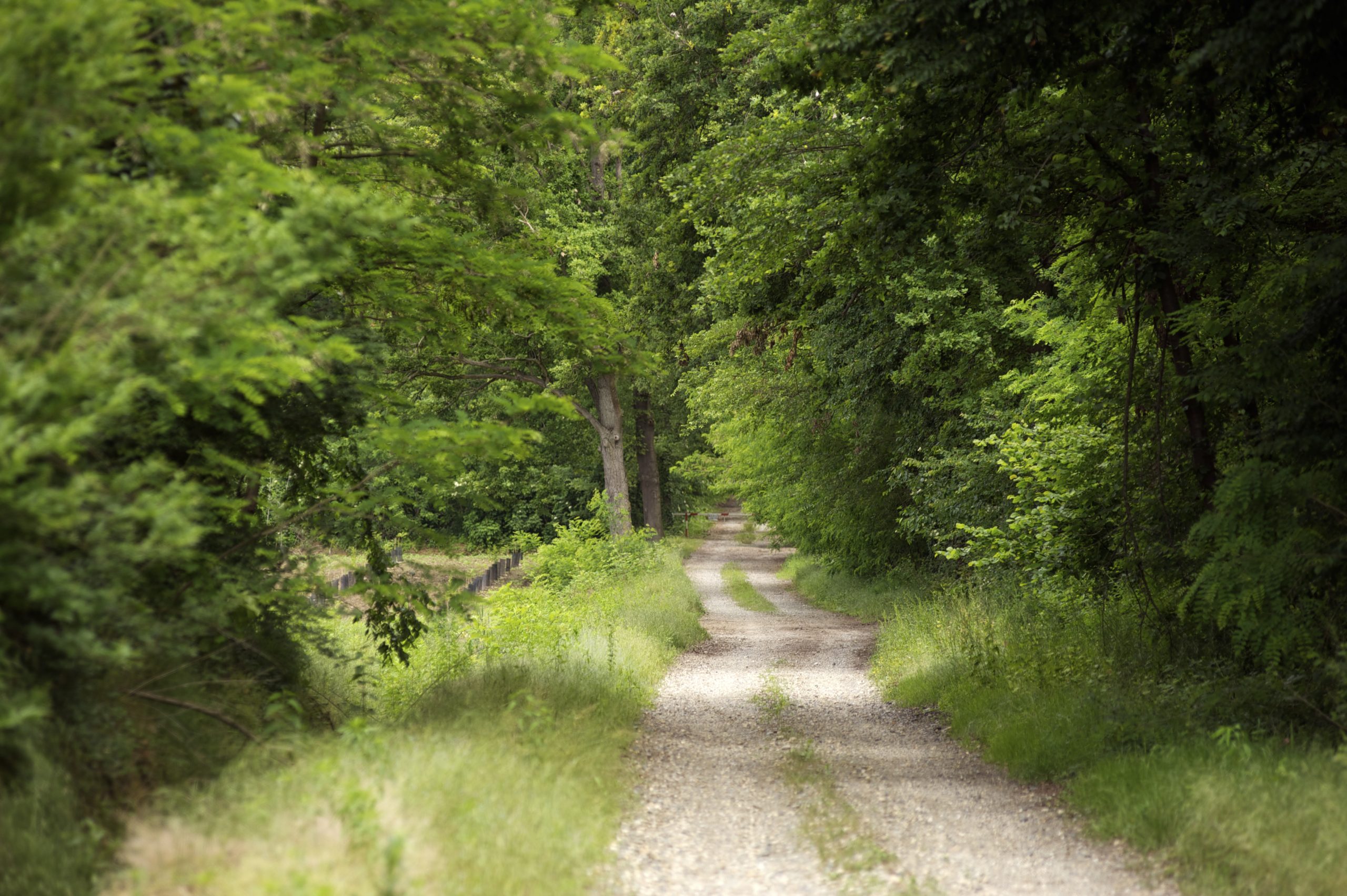
4 “Sorti e della Partecipanza” forest nature park
The last remnants of the ancient lowland forest that extended across the Po Valley, a forest, of very ancient origins and already sacred to the Romans, was preserved thanks to an extremely strict collective management system known as the “Partecipanza” that dates back to the Middle Ages. The forest features several hiking trails and equipped areas where you can enjoy pleasant moments of relaxation.
5 San genuario
TenSan Genuario, an agricultural estate that was in the past the site of an abbey, is the most ancient Benedictine monastic settlement inside the forest of Lucedio. Do not miss the Castle dating back to the 14th century, which has a magnificent circular tower surrounded by a fortress and the San Genuario Nature Reserve, which preserves an important system of wetlands fed by springs and fountains.
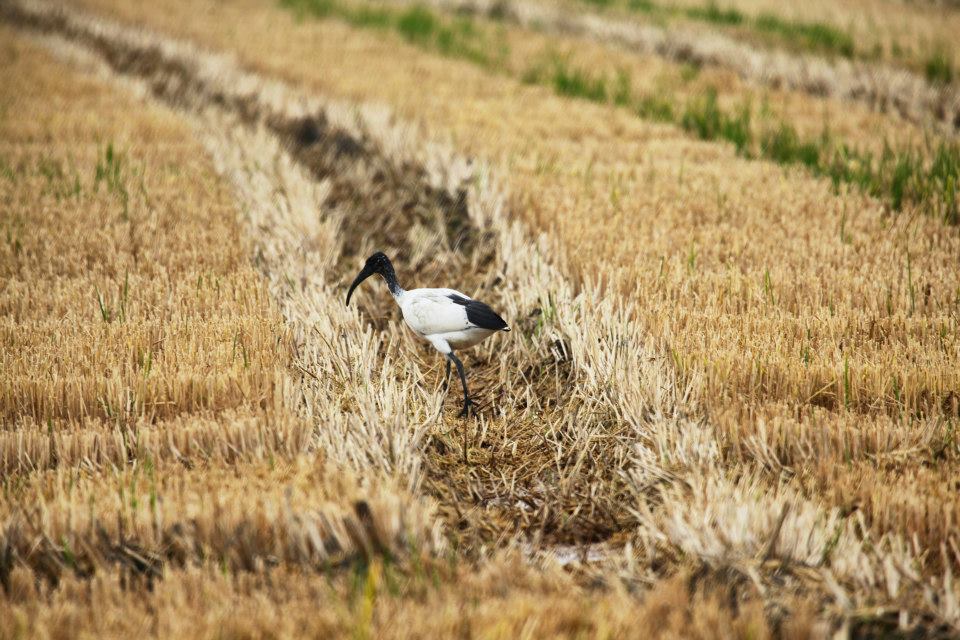
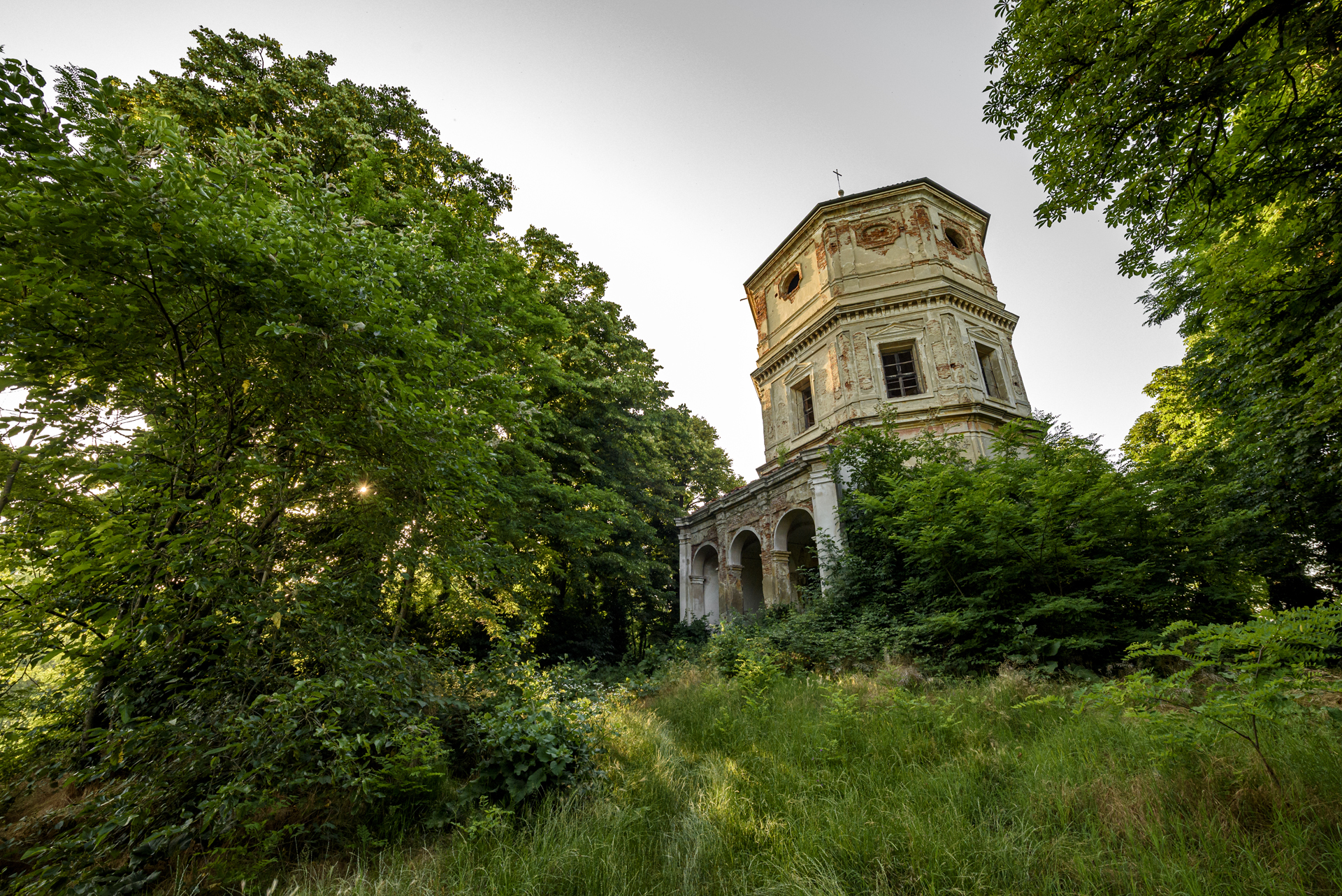
6 madonna delle vignE SANCTUARY
The Sanctuary, abandoned for many years, is located on the hill leading to Montarolo and is a fine example of Piedmontese Baroque architecture and a place that has inspired many legends and mysteries. The most famous is the “Spartito del Diavolo” (“Devil’s score”), a palindrome song considered magical and supposedly able to free a demon held prisoner in the Abbey of Lucedio.
L’Abbazia di Lucedio
Cascina Darola
Montarolo, Ramezzana, Castelmerlino, Leri e Montarucco
Montarolo, Ramezzana, Castelmerlino, Leri e Montarucco
Montarolo, Ramezzana, Castelmerlino, Leri e Montarucco
Montarolo, Ramezzana, Castelmerlino, Leri e Montarucco
Montarolo, Ramezzana, Castelmerlino, Leri e Montarucco
Bosco delle Sorti della Partecipanza di Trino
San Genuario
Santuario Madonna delle Vigne
How to get to the Grange
BY CAR
From Vercelli: take the SP1 “Strada delle Grange” towards Crescentino. Turn on SP 34 towards Lucedio.
From Milano and Torino: take the highway E25 and exit at the tollbooth of Vercelli Ovest. Take the SP1 “Strada delle Grange” towards Crescentino. Turn on SP 34 towards Lucedio.
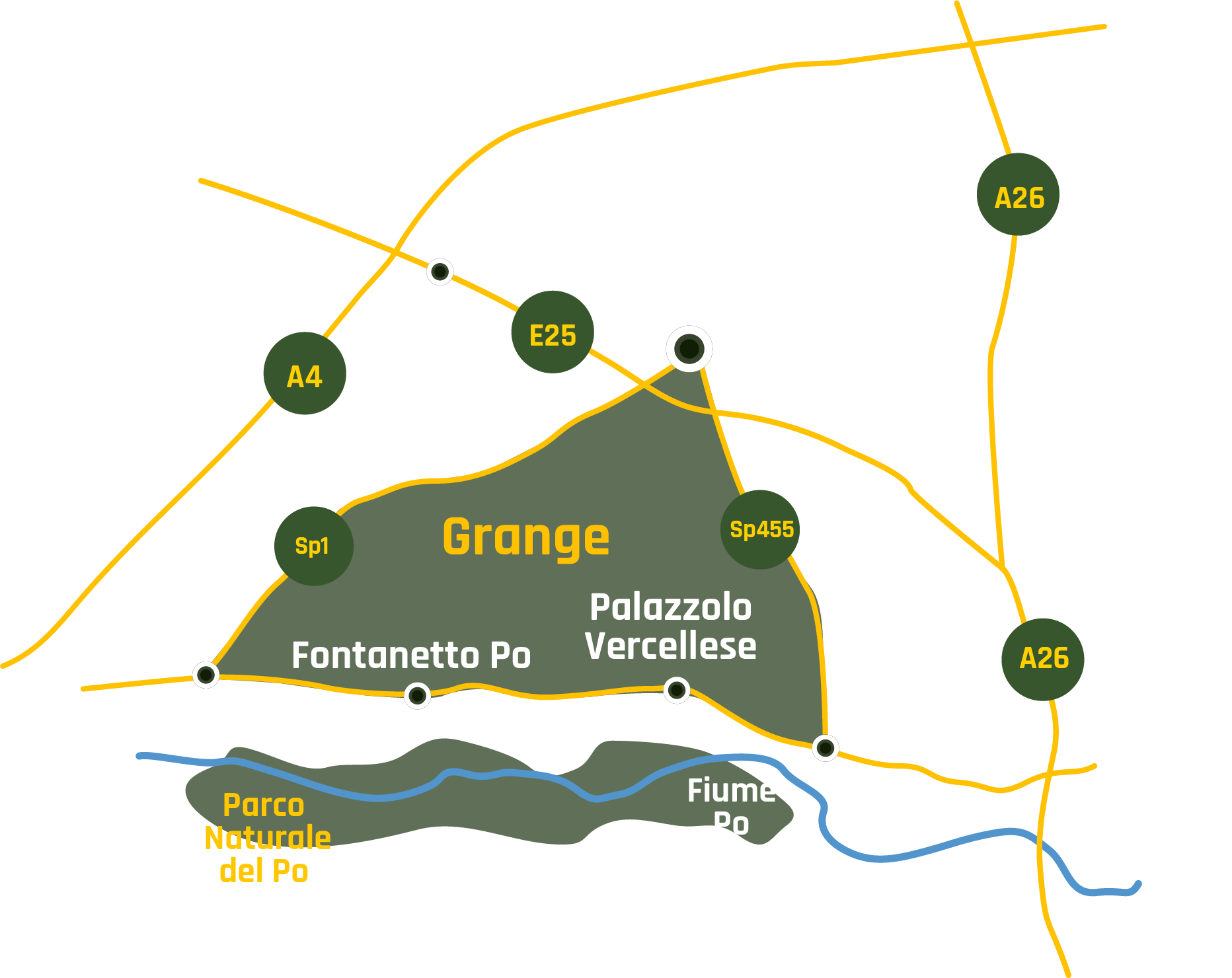
Deepening
THE Grange
The Grange, literally “granaries”, were ancient residential units and agricultural centers where the lay brothers, or Cistercian monks not part of the convent, carried out land reclamation works on an area covered by lowland forests to make it suitable for agricultural use.
The Grange represented a decisive instrument in the process of transforming an uncultivated area into arable land: when a landowner wished to transform his possessions in order to make them productive, the abbots sent their own monk, the “granciere”, who directed the reclamation work.
It is therefore undeniable that the activity carried out by the monks in the Vercelli area was a determining factor in the birth and taking root over the centuries of an agricultural and rice-growing vocation: it was in fact the Cistercians who introduced rice cultivation in the 15th century.
Plan your holiday
Where to eat, where to sleep, how to get around: plan your trip to Valsesia and Vercelli!
